

Semana tres: El camino de Valencia
Hola a todos y todas, and happy miércoles!
We’ve gained quite the number of readers this past week—past high school teachers (hola, Pablo), professors, classmates, family members, and friends. It’s a lot of fun, but also a little bit of pressure. So, I hope this meets all of your expectations!
But at the end of the day, the true purpose of this is so that one day, if my future spouse, colleague, friend, or kids (who knows?) ask me what it was like in Spain, I’ll have my notes ready.
It also serves as a window into life in Spain—so that when I’m deep in some high-level academic paper on Spain or Spanish, I can think back to moments like when the kids in my casa turned off all the lights and ran past the windows with a lightsaber, screaming to scare kids at the park outside.
Or how I’ve somehow managed to befriend all four gatos in the casa—so much so that they fight each other trying to get into my room. (There’s an unofficial rule among them: one—sometimes two—gatos allowed in the room at a time.)
It’s the simple things in life, really.
Plus, it’s just fun to write it!
I do have to note that my host family still doesn’t know about the blog. They just think I’m some crazy college student who aggressively types extremely long essays. In fact, this has been mentioned to me a few times—how intelectual I seem (and hint: it’s not because of the español I’m speaking).
Anyway, whether you’re old or new: bienvenidos — let’s go!
Like last week, I’m going to start with some US/Spain differences and culture shocks.
1. The Gatos
Last week I mentioned the worst part of Spain—the paper. So this week, I’ll mention the hardest thing: talking to the cats in Spanish. Probably the biggest culture shock.
I mean, just speaking to people in Spanish sometimes makes me feel stupid, but animals? That’s worse. Like, I’ll be alone at the casa and start speaking English to them out of habit, and then mid-sentence I’ll realize the cat doesn’t know what I’m saying.
I mean, I don’t know if the cat knows Spanish, but it always responds to the Spanish. So I’m going to say sí to that one.
Anyway, I doubt it understands me either way, because for some odd reason, my Spanish accent seems to go downhill the minute I need to use it in the casa.
Group work in class? No hay un problema.
But talking about my day or to the gatos? It’s lowkey embarrassing.
But that’s what you get when all your energy is put toward making sure you’re saying the right thing. Like, if I don’t know a word in class, I can just say it in English. But at the mesa (table), things have to be coherent, speedy, and stopping to look up or explain a word is… challenging. And frustrating.
But on the bright side, at least I’m not saying hola with the h (something I have heard out the mouths of a few around Spain… obviously not the locals).
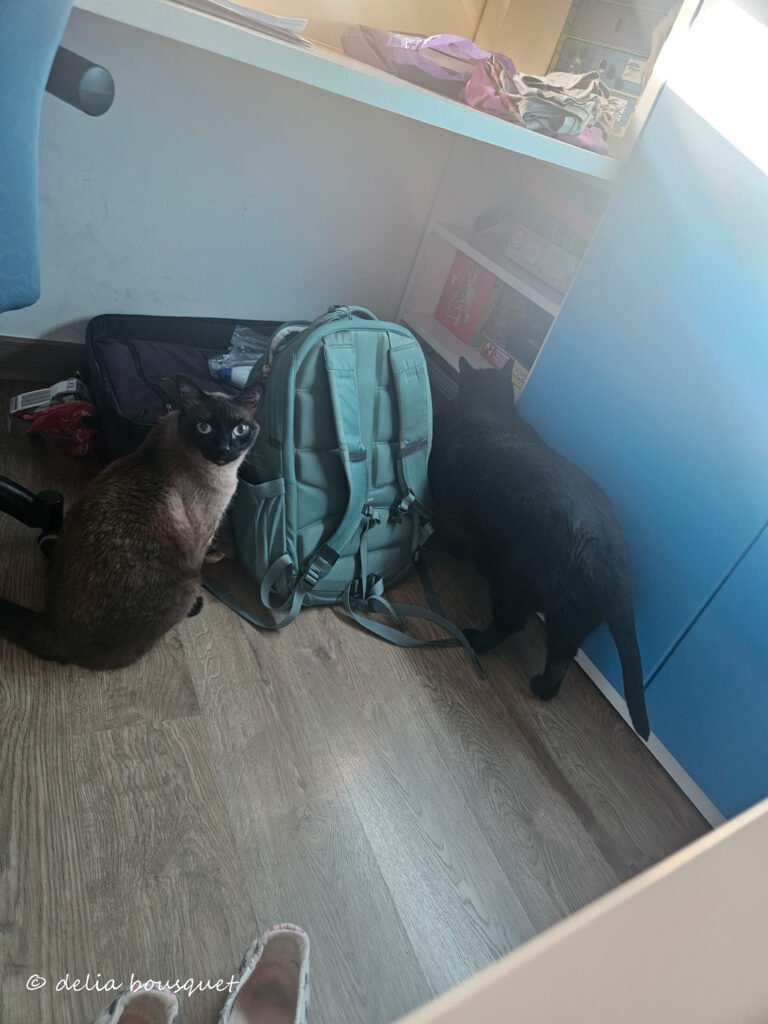
2. Yogur
OK, I’m not sure how normal this is, but I have eaten so much yogur (yes, the T is intentionally left off—don’t blame me, blame the Spanish). After every single meal… yogur.
Don’t get me wrong, I absolutely love it—and that’s coming from someone who normally doesn’t even enjoy yogurt.
But this yogur (see foto below)? It’s amazing.
3. Alien Bananas in the Friges
The life hack of the century—so I hope you’re taking notes.
So, my host mom asks me if I want a plátano (a banana). I say sure. She goes into the kitchen, opens the fridge, and takes out a banana-looking object wrapped in tinfoil. She removes the tinfoil to reveal the brownest banana I have ever seen. Like, the whole entire thing was very dark—bordering on black.
I was starting to regret my decision about the plátano… until she explained that the fridge and the tinfoil keep the banana ripe.
To my utter surprise, I opened up the banana and it was completely yellow inside. It was perfect.
From my research, this isn’t really a Spain thing—just a genius life hack that slows ripening and the release of ethylene gas. Who would’ve thought?
Lesson learned: bananas belong in the frigo (fridge). (See? I’m picking up all the abbreviations—jaja.)
At the same time, there are some items in the frigorífico that I didn’t expect—specifically milk and eggs. I read somewhere (idk when) that in Europe, those items aren’t stored in the fridge.
I can’t speak for all of Spain, but in mi casa, both are definitely refrigerated. I did, however, wander into Mercadona (more on that later), and there, they were not refrigerated.
So… idk.
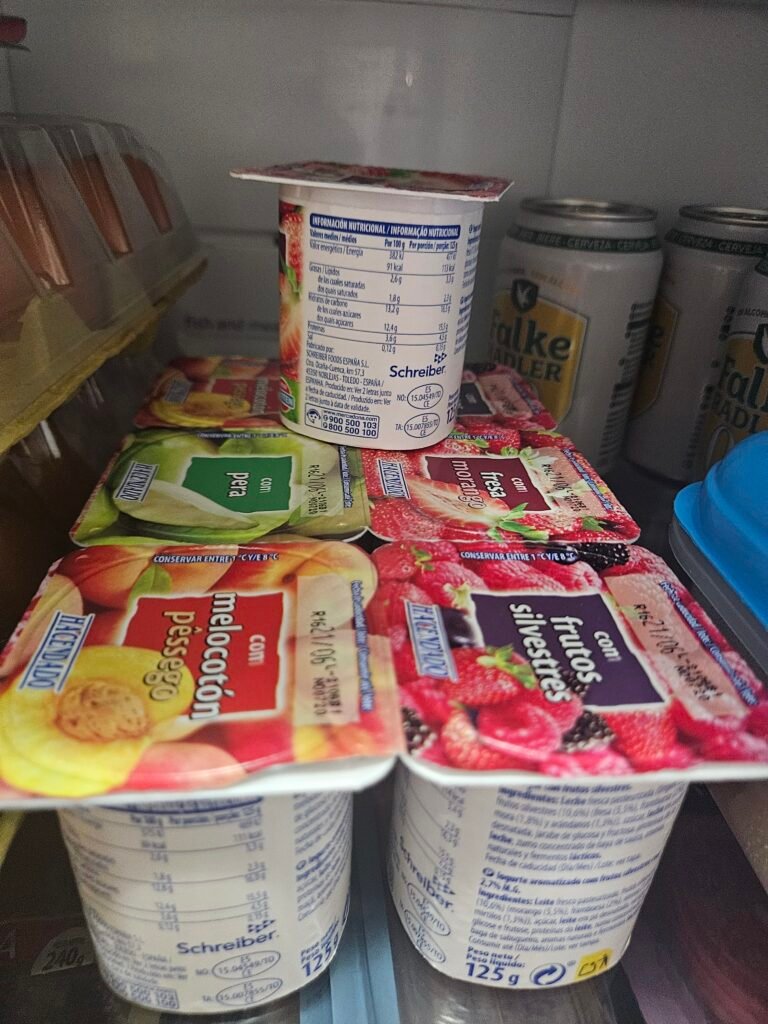
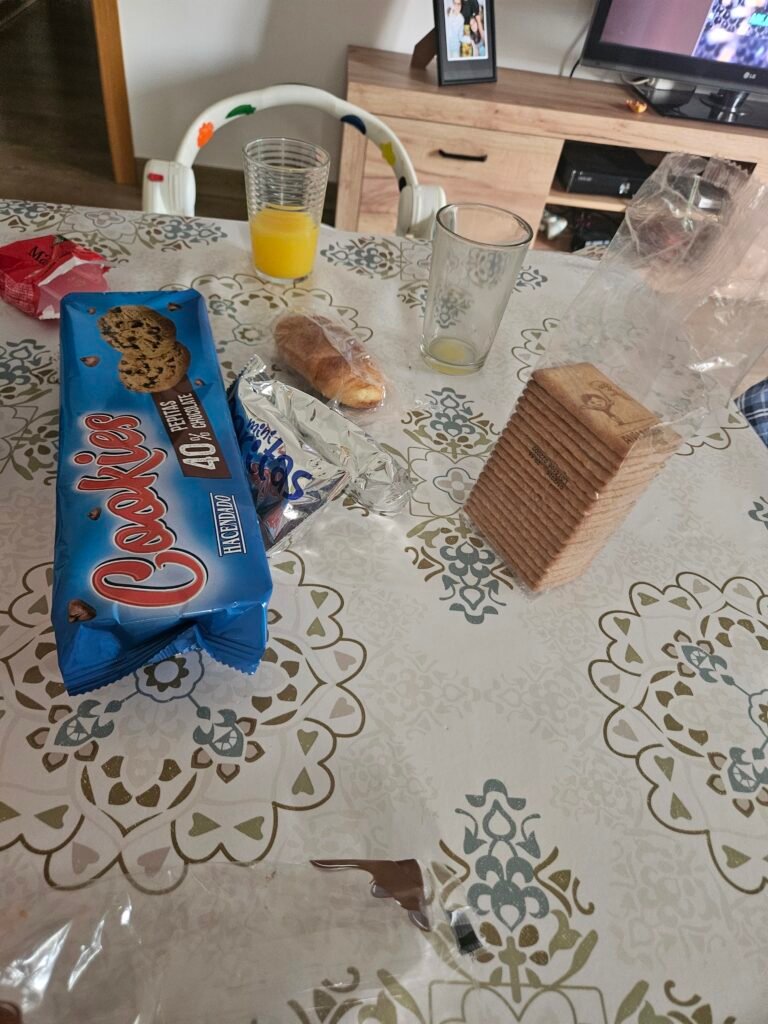
4. El Pan
Continuing on this food trend, let’s talk about the bread.
Number one: it is amazing. But beyond that, the traditions around bread are a little… odd.
Like, why do I need to put my bread directly on the table? Why do I need to rip the bread with my hands instead of using a knife?
I’m not sure I’m following the reasoning on this one, but I wouldn’t say I have a problem with either tradition. They’re just interesting to discover.
5. Skipping School
Moving away from food, let’s talk about cole—short for colegio (think elementary school).
I don’t know how common this practice is, but at the niños’ (kids’) colegio, in June they stop having class in the afternoon. Normally, they get a two-hour lunch break (I’m forgetting the exact time), during which they have the option—I believe—to return home or eat in the comedor (dining hall or cafeteria). From what I hear, the food isn’t very good. Then they return to school.
The hours outside of septiembre and junio (according to the cole’s website) are 9:00 to 13:00 and then 15:00 to 16:30. Quite an interesting schedule.
Even more interesting is that during these lunch hours, I frequently see these young children walking around town alone—talking, playing, getting into trouble, etc. Like I mentioned in my last blog, I feel very safe here in Spain, so I can understand this, but the American in me is like what!? This could never fly in the U.S.
On that note, I was shocked when my host mom let the kids stay home from school due to the heat. My mom would never let that fly in the U.S. We were given one sick day a year, and my brother and I were very conservative with it.
Beyond that, in high school, I tried to miss no days—frequently going to school very sick—because I was afraid of falling behind (although this quickly changed my senior year, when I got Covid my first week of school, caught a bad cold in the winter, and decided to go tour a bunch of schools in the spring).
I’ve never deliberately missed school. Even now in college, I’ve only missed two classes this entire year—and both times, it was because I had to take a midterm during the scheduled class.

6. Netflix España
Being a little bit of a película (movie) aficionada, it has been very fun to discover Netflix España.
When I was in Spain last year, all I got were error messages saying I couldn’t use it because I was out of my region. Now? I’m getting it all. Bonus points? After getting the Wi-Fi contraseña (password) wrong so many times, my phone is now in Spanish to better receive help from my host mom.
So Netflix has become the full experience. I get the original Spanish titles, descriptions, and ratings—all in Spanish. The Spanish movie rating system is a little odd, and according to Google’s summary, the ratings are as follows:
- A (General Admission)
- 7 (Not recommended for audiences under 7)
- 12 (Not recommended for audiences under 12)
- 16 (Not recommended for audiences under 16)
- 18 (Not recommended for audiences under 18)
- X (Prohibited for audiences under 18)
Another fun movie/TV note: it is so funny seeing Spanish shows where the characters speak English. Por ejemplo, I was watching some old TV show with my host family where this old man who owns a bar has to learn English to get into a guidebook. He runs into trouble with a supposed “native English speaker”… Yeah, no way she was a native speaker. Maybe a native Spanish speaker, but definitely not English.
I sort of feel bad because I have experiences like this all the time in Spain. Someone will be talking to me in Spanish, then suddenly say something in English—or read a sign in English—and I’ll be left going, ¿qué? Sometimes I don’t even realize they’re speaking English. It’s wild.
Here’s my theory (and don’t quote me, because I am 100% not an experta on this and have done zero research): Spanish is more connected and fluid than English. English tends to be more spaced out. So when I hear native Spanish speakers try English, it often sounds too connected—like all the words blur together and I can’t distinguish them.
What I really don’t understand is how integrated English is into everyday life here. And I’m not just talking touristy stuff. My host mom, for example, bought her daughter a dress online from Decathlon—which she said was a Spanish brand. But after writing way too many blogs in high school about triatlón and other sports that end in -thlon, I can tell you that in Spanish, you can’t end a word like that. It should be decatlón.
On that note, there are so many brands with English names that are supposedly Spanish… more on that later.
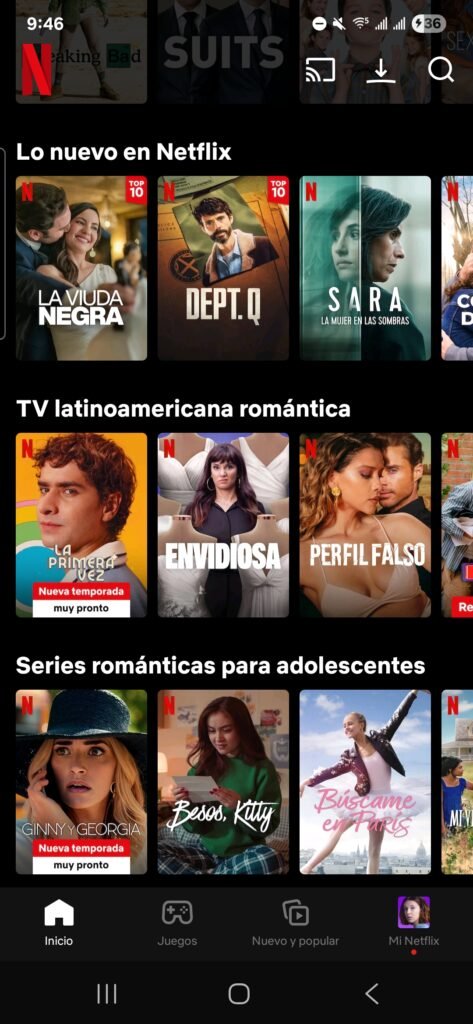

Continuing this movie rant: I have seriously disappointed my host family with my lack of U.S. movie knowledge. Has anyone heard of The Last of Us or The Man in the High Castle? Because I hadn’t—and that was a very disappointing moment for them.
I am definitely not the person they should be trusting to impart the pop culture of Hollywood or the U.S. at large
7.Celsius
For someone who was previously aggravated by paper, I’m guessing you all probably have some thoughts about what I’m about to say regarding Celsius.
Hold your horses, though—because I officially speak Celsius now.
I mean, I started learning it last year after going to Spain. At boarding school, there were always international students confused by Fahrenheit, so they’d talk in Celsius. And now? I’ve joined them.
Here’s my current dictionary:
- 35°C and above = unbearably hot
- 28°C = still hot, but acceptable
- Anything below 28°C in Spain = perfect
Right now I’m enjoying a sweet break from the heatwave—a solid 24°C today with a light viento (wind). Beautiful.
That’s all you need to know.
Do I speak metric or military time yet? Absolutely not. Military time is still borderline a paper problem every time I buy train tickets. But with time (ha), maybe I’ll get there.
My advice?
It’s basically the same I’d give to someone learning a new language: stop translating—just live.
Want to know how hot 40°C is? Walk outside. Don’t do the math.
Want to know what a persiana is? Live with a Spanish host family that tells you to raise and lower it twenty times a day. (Spoiler: it’s a window shade.)
Honestly, persiana is such a fun word. If anyone knows someone having a kid soon, name idea: Persiana. Elegant. Unique. Breezy.

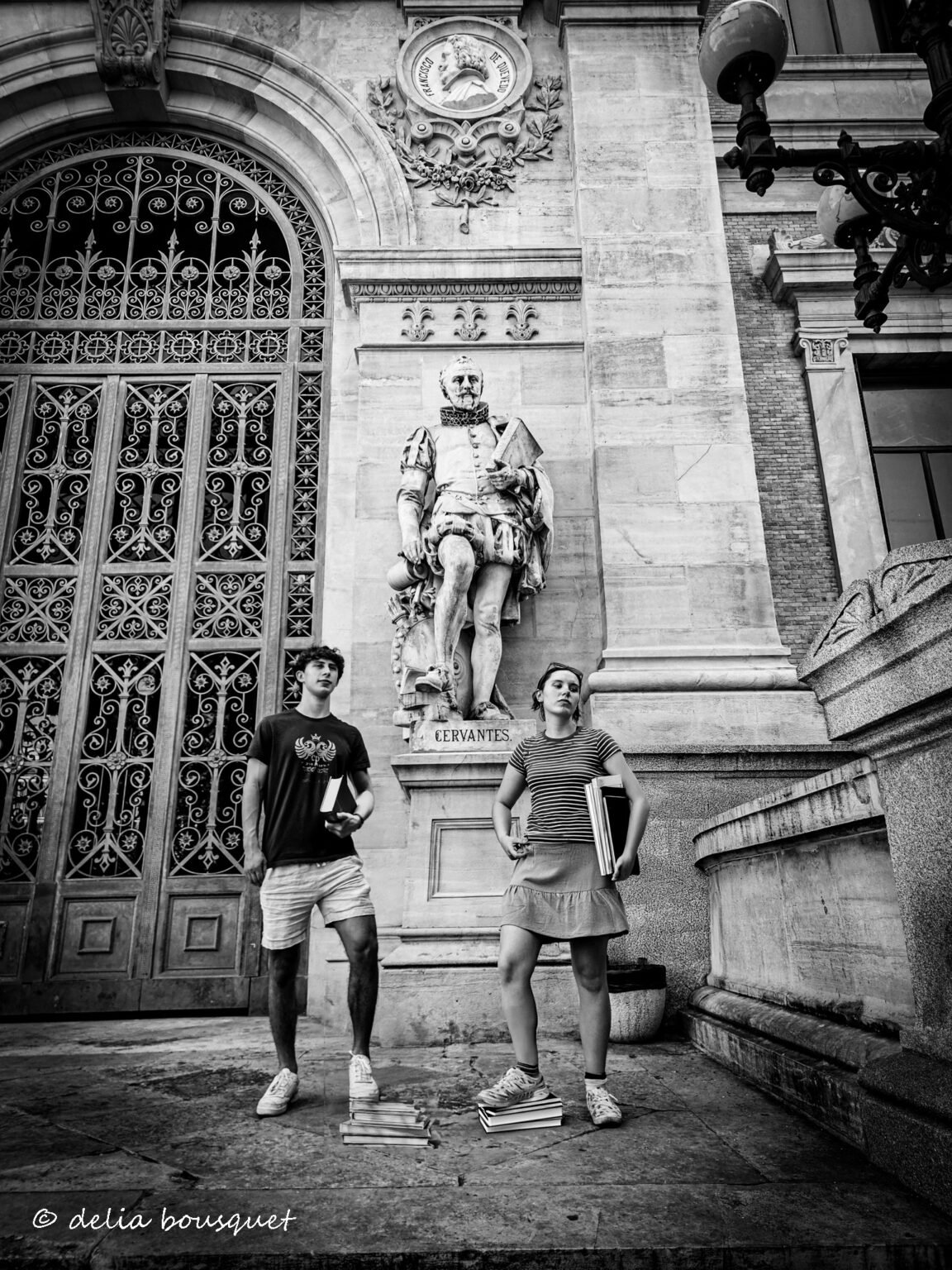
8. Sustainability (Part 2)
Dear Spaniards,
Please—I beg of you—stop throwing used cigarettes on the ground.
It just feels so wrong. Especially in this dry climate! I literally saw someone (may or not have been a profesor) toss one into a dried-out plant the other day. I just stood there, silently waiting for it to spontaneously combust.
Like—every train car has the UN Sustainable Development Goals plastered on them. There are sleek filtered water fountains at the Fundación. Compost bins. Solar panels.
But it’s totally fine to flick your burning cigarette into the street?
Maybe Spain needs to start charging people for medical care like the U.S. does. (Kidding. Kind of.) Start paying $2,000 to treat that smoker’s cough and maybe it’ll make you think twice?
IDK. Just a thought. (This is a joke… obviously.)
9. How to Sound Spanish (from Spain)
OK, I totally could get into the specifics… because there was once a point in my life where I spent many weeks (en mi tiempo libre) learning the ins and outs of the Spanish lisp and a whole year trying to learn the Spanish J (which, might I add, I finally “mastered” a few weeks ago… still haven’t actually managed to use it in a conversation—I’m sure my neighbors at Princeton thought a cat was dying in my room after all my weird attempts). The secret? Learn how to do an R in French. Then apply it to the J in Spanish.
Tangent aside… if you really want to sound Spanish, just end every sentence with a vale or de acuerdo. I don’t have a good English comparison, but it’s like clockwork for some, especially with my Spanish host mom and profesora here. Sometimes you can throw in a ¿sabes? and get by with that… but vale for the win. I was joking with some of my classmates that I’m a little worried I’m going to be walking around Princeton in the fall saying vale just by the sheer number of times I use it here.
10. Keeping Cool and Loud Coins
Okay, the last two things—fans and coins—I’m lumping together because honestly, I could keep going on this observational rant forever.
Let’s start with fans.
You know those hand fans little kids play with in the U.S.? (Family members: I’m talking about the ones Rose gave everyone for Christmas that one year.) Yeah, I always assumed those were just toys. Novelty items.
But here in Spain? They’re serious tools of survival.
People actually carry them in their bags and use them. Like, not ironically. Not as a joke. Grown adults pull them out mid-walk, mid-conversation, mid-sweating-through-their-shirt and just fan away. And honestly? Genius.
Because I truly thought I was going to melt during the last heatwave.
Like… evaporate.
And now onto coins
Spain is still a big fan of efectivo (cash). At a lot of places, they’ll ask you: tarjeta o efectivo (card or cash?) and—surprise!—some shops still don’t even take card. So I’ve had to use cash here and there, mostly for my postcard collection.
The problem?
Now I have a growing collection of annoying, clunky coins.
They fall out of my wallet.
They make a racket in my bag.
They’re fatter than U.S. coins.
And they feel like they multiply overnight.
The only time I’ve successfully used them is at the Fundación, where you have to feed coins into the printer like we’re in the Edad Media (Middle Ages), because yes—our essays must be printed on paper.
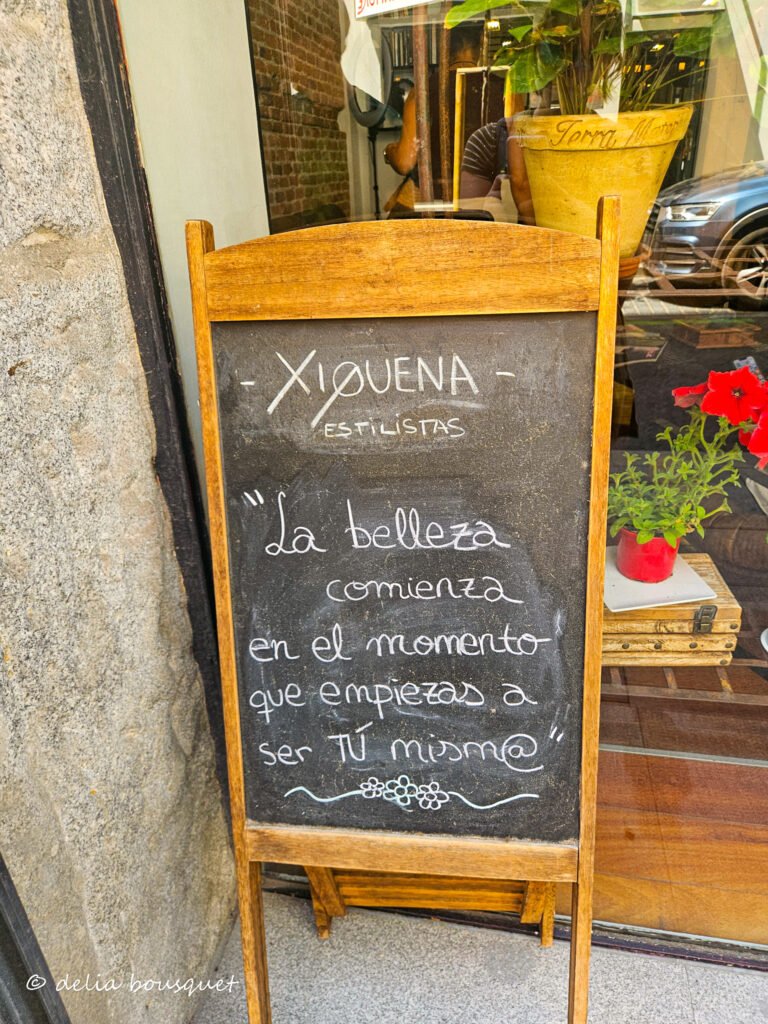

So yeah, I know some of this might sound a little critico… but don’t get me wrong. Like I wrote last week, I’m loving life here. These are just some quirky personal observations—take them with a grain of salt, vale?
Now, let’s talk about my week.
Starting with last miércoles and the night of martes (Tuesday).
Remember how I mentioned my fashion trendsetting among the Spanish preteens last week? Well, this week on Tuesday night, I went to a local tienda (shop) with a friend. It was called “Mood,” which, apparently, according to the woman who worked there, is based out of Barcelona. Still uncertain how this would be pronounced in Spanish and it’s clearly an English word. Anywho, very interesting clothing here. Definitely my style—if we muted the colors a bit. Maybe it will grow on me in my thirties or forties, who knows.
This friend of mine saw a skirt in the window that she absolutely loved, so she decided she wanted to try it on. Apparently, there was only one of this skirt in the entire store, so the lady who worked there not only had to split the manikin in half—leaving it without a top half—but also disrobe it. It was an interesting skirt, definitely not my style, but it looked good on her.
Long story short, my friend needed a shirt to try the skirt on with. She said she wanted something crazy, and I brought her a very cute blue shirt. Apparently, “cute” was the wrong word and I needed to find something white and simple. I bought three different options. Knowing that this friend was not actually in the market for a shirt and just wanted to see how the skirt looked, I enlisted the help of the store worker as a little revenge. I asked her—in my “perfect” Spanish, of course (a theme for this week—talking to many shop people)—if she had any recommendations. She then proceeded to bring shirt after shirt after shirt for my friend to try on. Might I add these shirts were worse than the ones I picked out.
But it was fun, and en fin, she bought the shirt.
So, if anyone is in need of fashion advice, I’m here… better than the shop worker. Might I add that they were looking for new employees with a pasión por la moda (passion for fashion). I wouldn’t go as far as to say passion, but I think I could be a great employee. Plus, I can speak English to the tourists, which was one observation I made while I sat in the one provided—what I like to call the “man chair” for the waiting maridos and novios—that the tourists who didn’t speak Spanish or English as their native language would speak broken English to the shop workers, who then would reply back in broken English as well.
Highly recommend this experience for anyone in Spain: go sit in a shop and just listen. You’ll learn a lot about Spanish and English. I’ve always said I wanted to learn English again but in Spanish, and this is as close as I’ve gotten to that experience.
Moving on to Wednesday, we went to el Museo de Greco in Toledo, which is located next to the casa. Unfortunately, leaving the casa to go straight to the museo was not an option, so I had to run across town (because I was late) to get to the Fundación and then meet everyone to walk back up the hill to the museo with the class. It was 38 degrees Celsius outside. It was not fun.
To add to the fun, the main room that had all of Greco’s work was closed because the aire acondicionado wasn’t working. So we spent most of the time outside, talking about the garden and how it is arquitectura. Maybe what they were saying was actually interesting, but since we were all sweating to death in 38 degrees, I don’t think anyone was fully paying attention to how the garden combined typical elements of Muslim and French styles to highlight color and the sound of water.
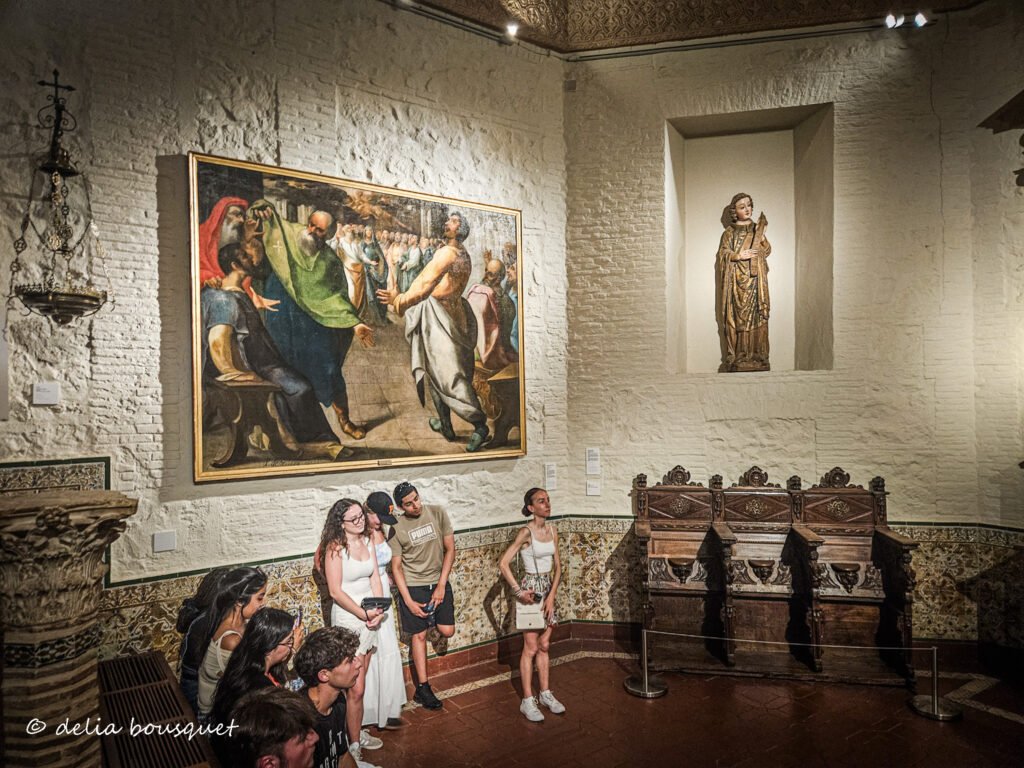
Jueves (Thursday) was just a normal (but once again hot) day. Turns out we’re in the middle of a heat wave. It isn’t supposed to be this hot in mayo. It’s supposed to cool down slightly this week. Any respite would be nice, as the heat has caused poor sleep on my part—I’m very conditioned to sleeping in what my mom would call the “Arctic Circle.” Frequently I am reprimanded at home for leaving the AC on the lowest/highest (?) (I don’t know how to phrase this) setting.
The bomberos (firefighters) even had to bring out hoses and some kind of foam for the niños during the school day. It was unclear whether this was previously planned or a result of the heat, but it was fun to watch the kids running around the plaza in bubbles.
I also found out today that the piscinas municipales (municipal pools) are opening soon, and I live very cerca (close) to one.
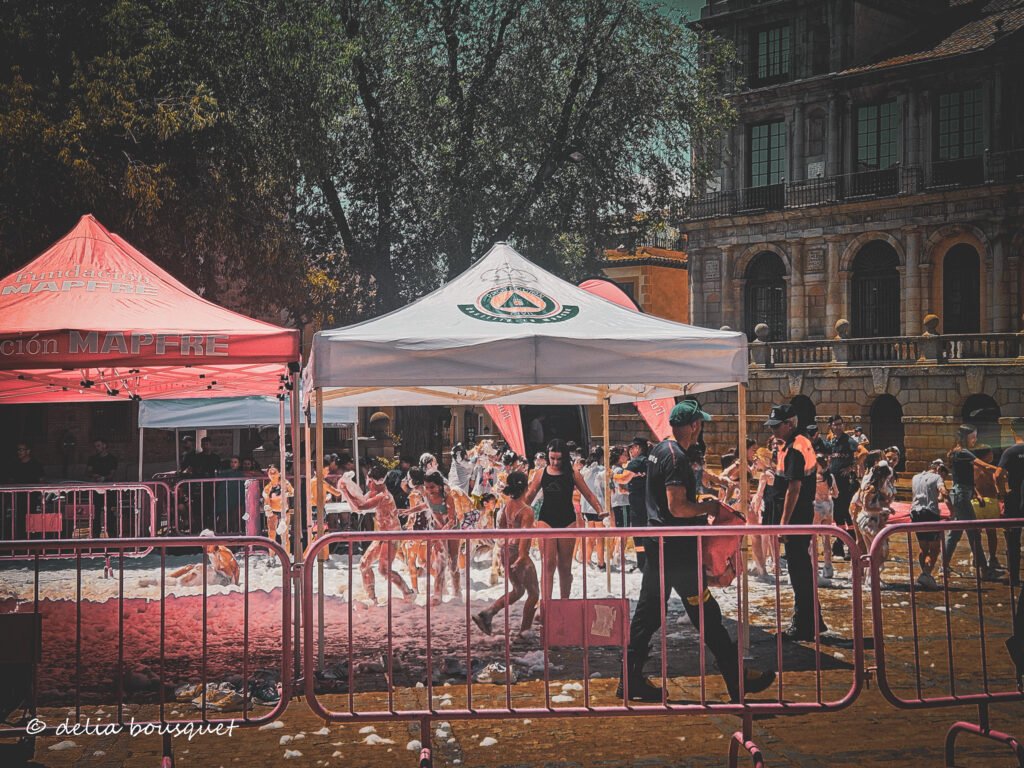
Even the cat, Miau, was feeling under the weather—so much so that he got an appointment at the veterinario for Friday. He was hiding underneath my desk on my suitcase, barely moving. I was a little concerned he was going to die on that suitcase, but luckily with the help of some antibióticos, I’m happy to report that as of today (Tuesday 6/3) he is doing well.
Viernes: After the worst night of sleep I’ve ever had in my life, I was absolutely exhausted. To make matters worse, I had to wake up early for our Madrid excursion and pack for my night away in Valencia. After a café (coffee), I finally mustered enough energy to dive into our proyecto de paisaje lingüístico (linguistic landscape project).
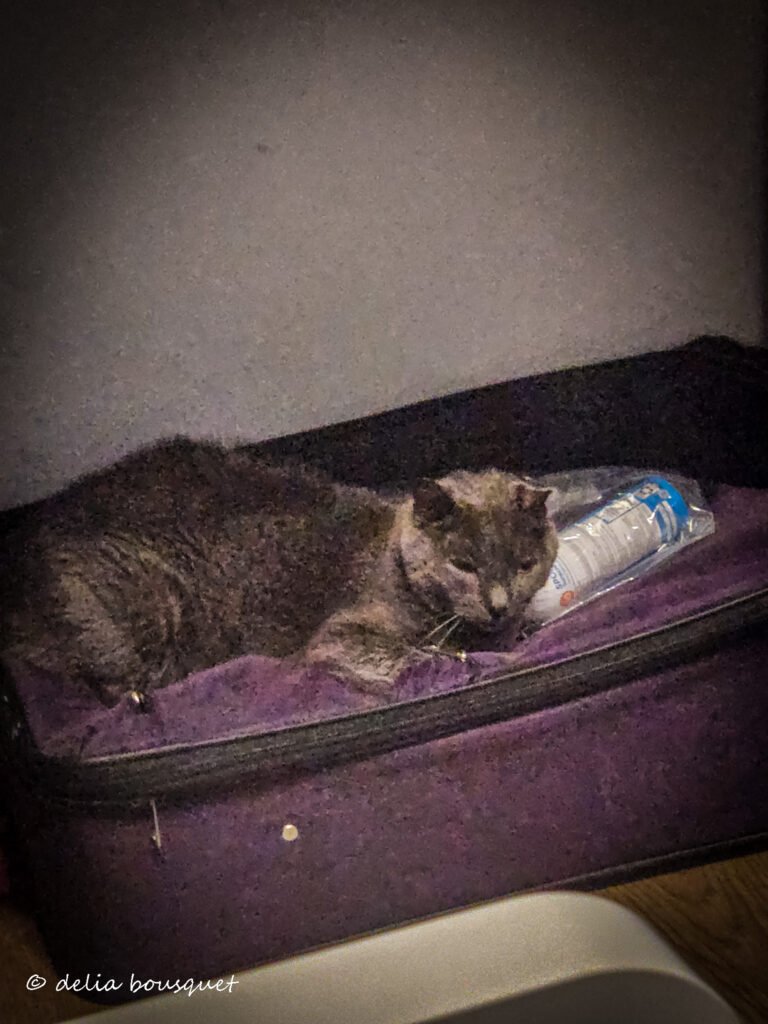
Basically, we were divided into groups to walk around and take lots of pictures of a zoned-out area of the city to explore how written language is used in public spaces. My group had Chueca, a neighborhood with ties to the LGBTQ+ community, as well as housing the Spanish Supreme Court and many restaurants.
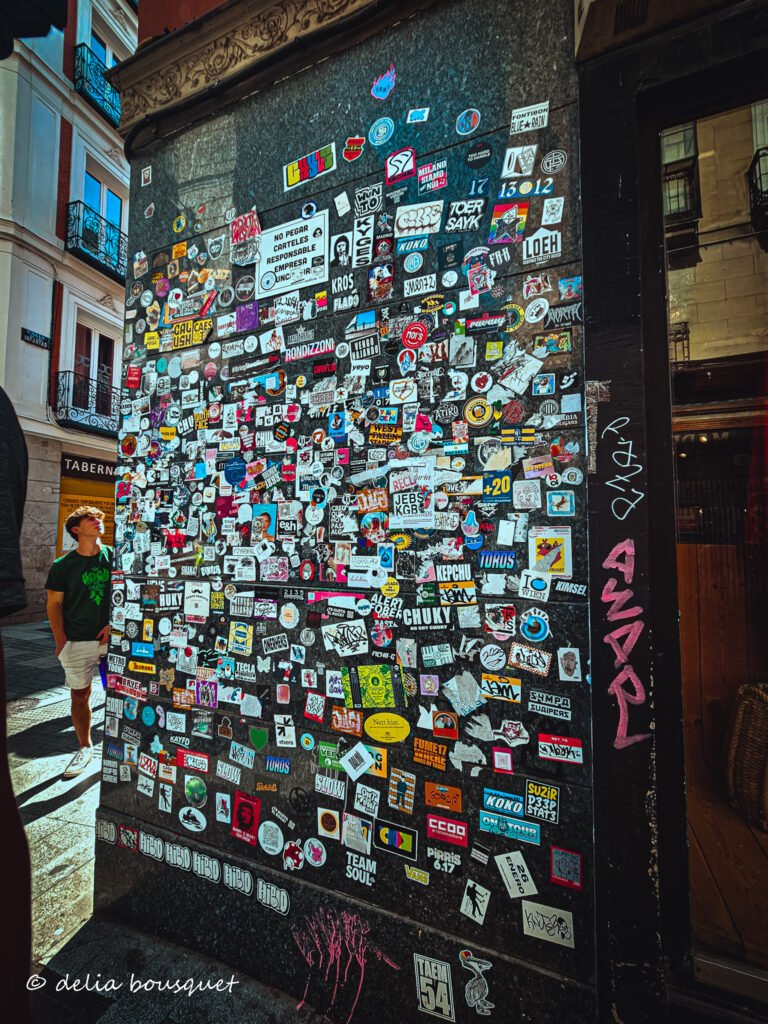
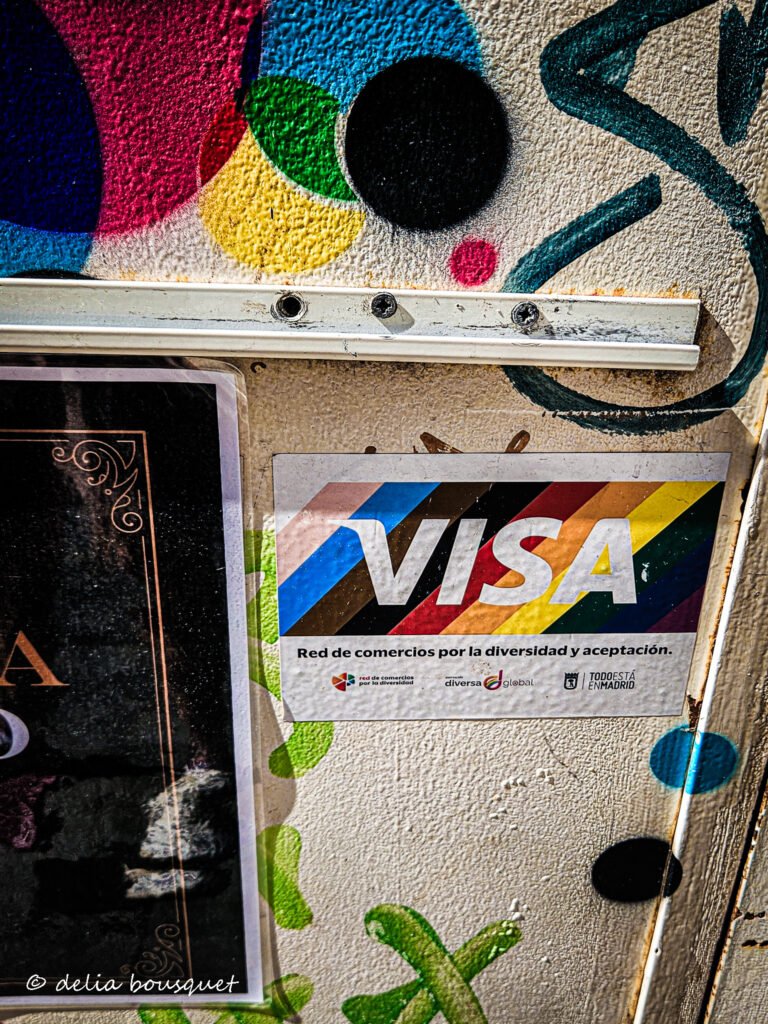
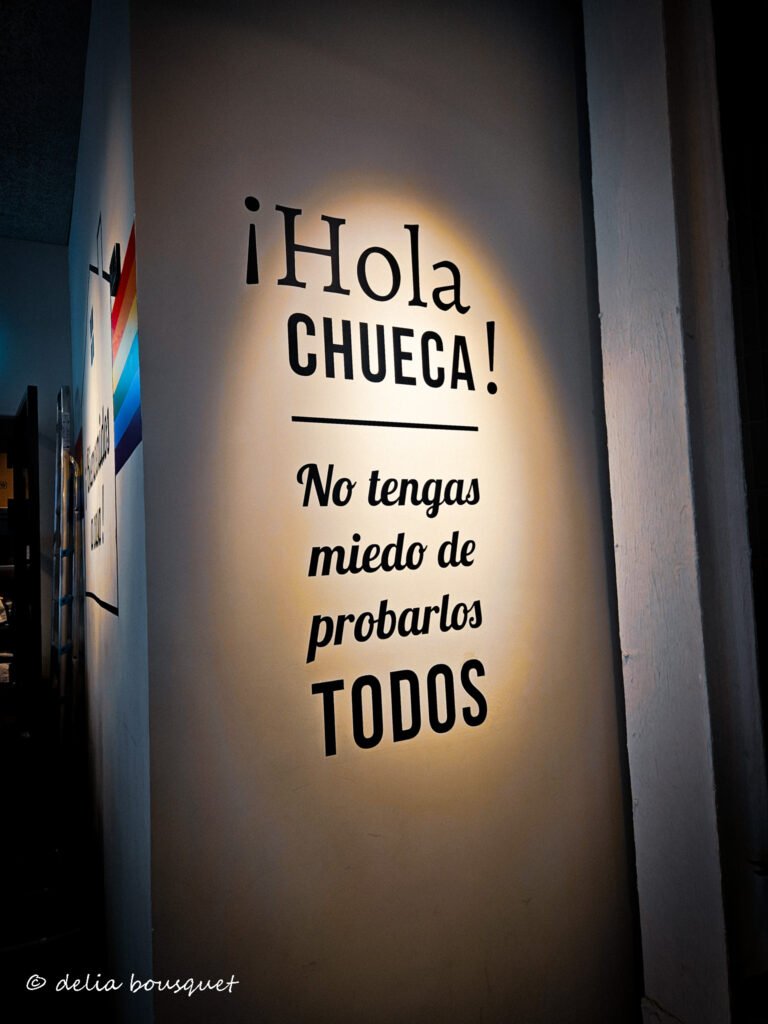
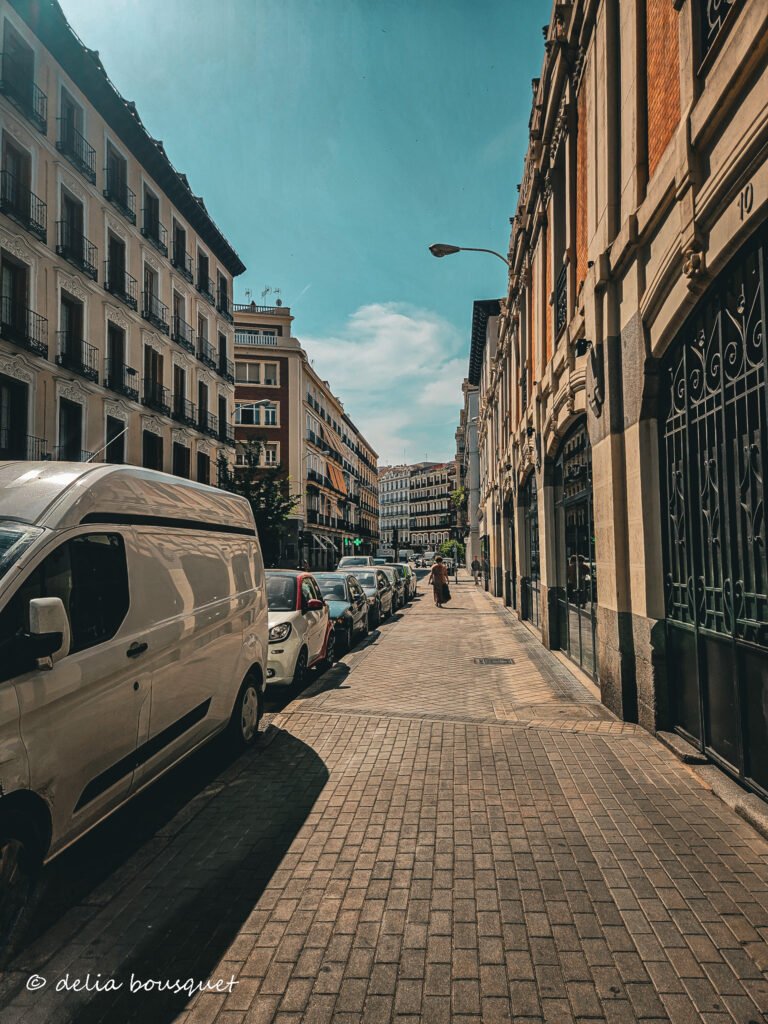


We saw everything from vandalism, appropriation of the LGBTQ+ flag, an 80-year-old librería (remember: bookstore, not library), ads for prostitutes on cars (which I accidentally took a photo of for our project), and a lot of English. There was definitely a lot of tension in a metaphorical sense—not physical—between the LGBTQ+ history of the neighborhood, the giant church in the upper right-hand quadrant, and a tension between the very Spanish locals and the English appropriation, both in a tourist sense and a working sense (I’m not sure how to explain this idea exactly).
From what I’ve read, some English words are frequently used in Spain because of the prestige they carry in the professional world—words like marketing, coworking, etc. I’ll spare you the 15-minute presentation, but it was a really fun experience and basically a more formal version of how I’ve approached traveling and observing Spain.
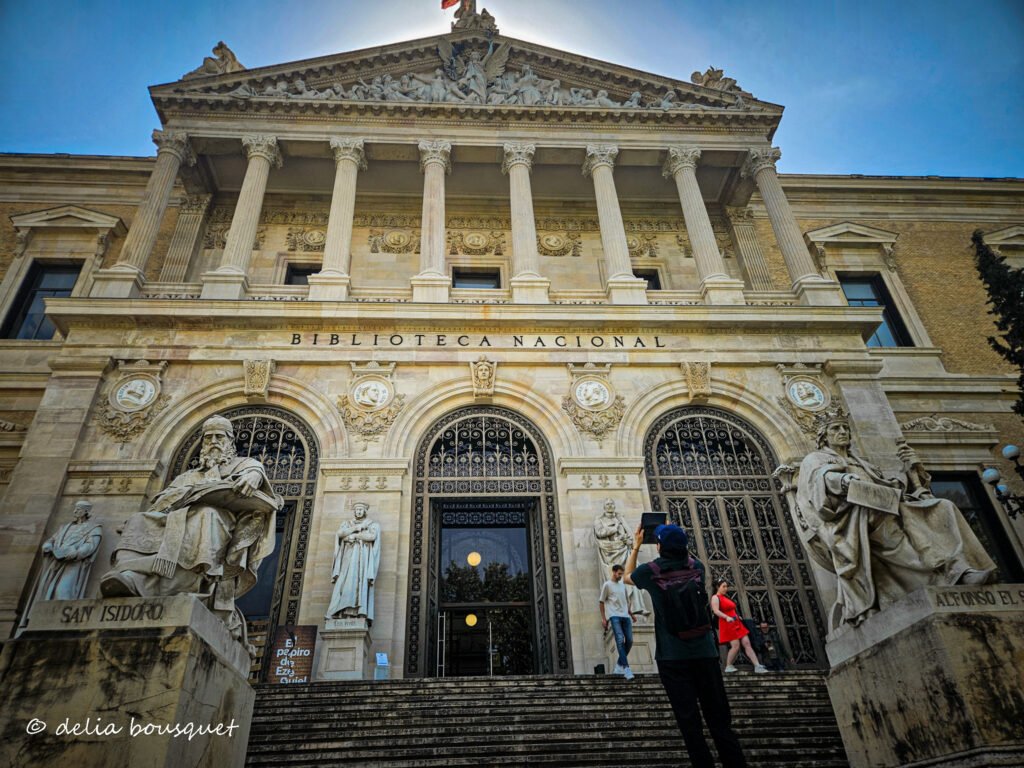


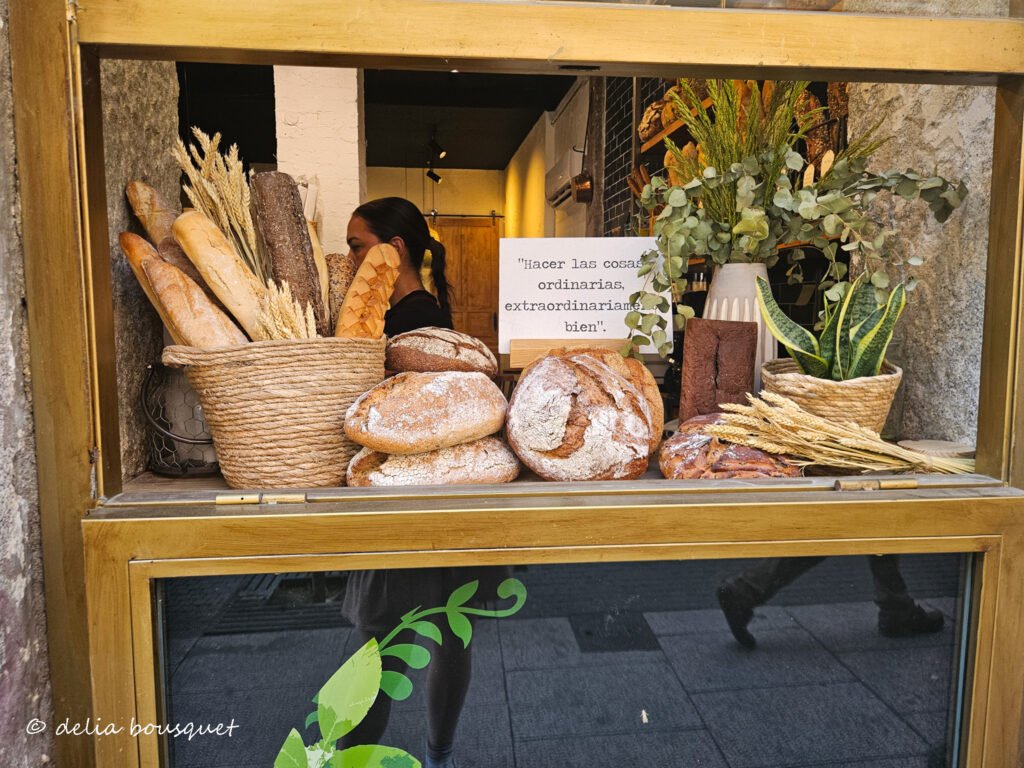
I have many fun pictures from my personal travels around the country showing how language is used or examples of community values and whatnot. I was very disappointed to only find one example of lenguaje inclusivo. To me, if there was a place inclusive language would exist, it would be in the LGBTQ+ neighborhood. But instead, I was left with rainbow Visa logos and coffee shops.
This was great practice for my trip to Valencia that night—the home of Valenciano/Catalán (another language that, according to a girl on the trip, takes the worst parts of Español, French, and Portuguese and combines them). After many weeks studying the revival of Catalan, I was really excited to finally see it out in the open.
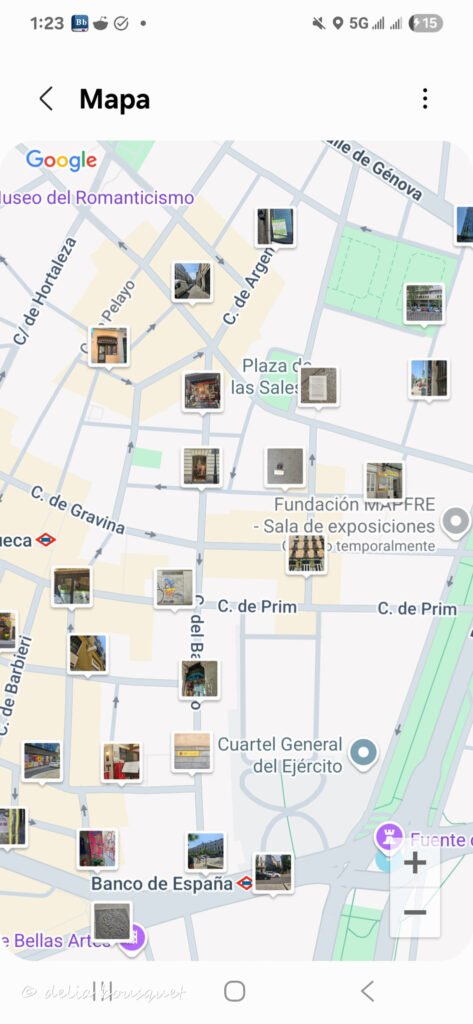
So this begins our section: How to Do Valencia in 19 Hours — The Delia Bousquet Very Too Much and Extra Guide.
Step one: hop on the train from Madrid to Valencia. It took about two hours. One thing I noticed is the difference in trains. The train from Toledo to Madrid was much nicer than this one to and from Valencia. Both were the same brand — AVE — so who knows what’s up with that.
We arrived in Valencia around 10 pm. From there, we had to get to our hotel/Airbnb situation. Now, I have to note: I did not make this reservation and knew very little about it. Just that six other girls were going, and I was going to sleep on the sofá — which, I’ll say now, was very hard and did not help my already terrible sleep situation from the night before.
Anyway, I didn’t realize how far away this place was from the actual city. Turns out it was like a 20-minute drive from the train station… with no public transport. That meant we had to Uber. Being from a small town and always having access to my own car, I’d never Ubered before — not even during travel. Mostly because my mom’s constant warnings and texts about young girls being abducted by Uber drivers have stuck with me.
So, it’s fair to say I was a little nervous about this: being in a foreign country at 10:30 pm, getting into a strange man’s car with three other girls.
On the bright side, I did get to see what seemed famous to me because I’d read about it in a book: the 24-hour farmacia window. The idea is that the pharmacy closes at a certain hour, but you can go to a window outside, and they’ll help you. Why anyone would need to go to the pharmacy at 10:30 pm, I don’t know — but there was a huge line outside.
This was very different from the U.S., where pharmacies have strict hours and lunch breaks posted everywhere. Maybe there was a sale on ibuprofeno😉
Another point: the number of farmacias. Like, almost one on every street. I did a quick Google search and found out Spain has one of the lowest people-to-pharmacy ratios. No comment on that, but still interesting.

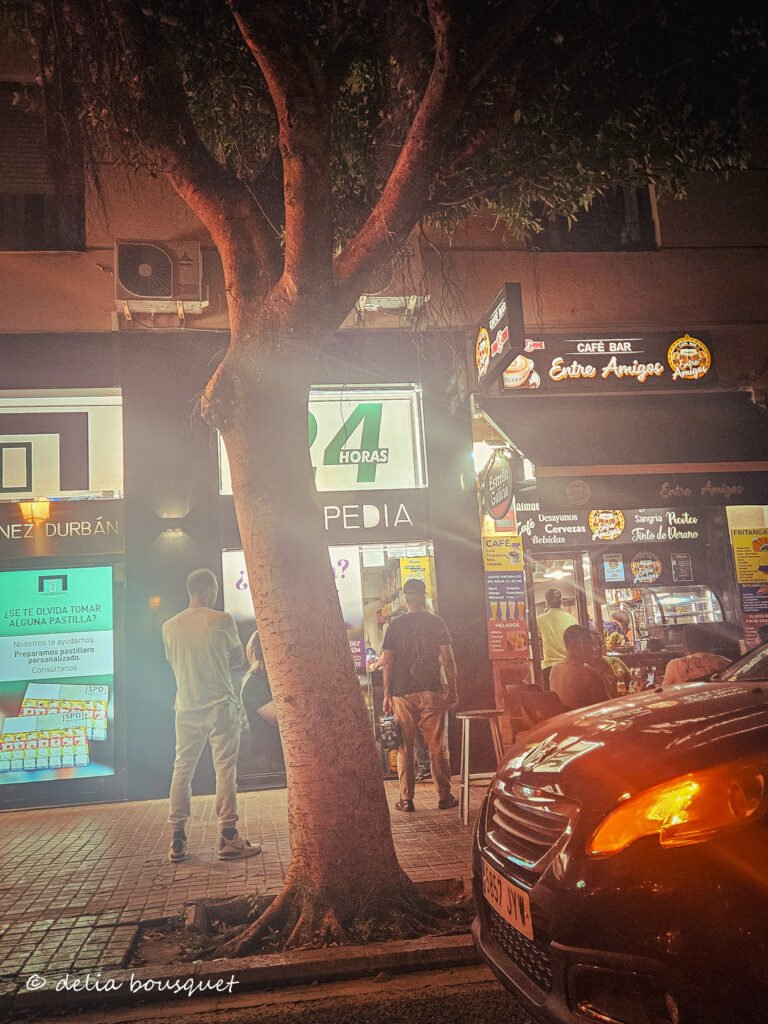
Moving on, the situation got even weirder when one of the girls decided to talk to the Uber driver in Spanish, asking what he thought of Valencia. He responded very aggressively in English, something like, “Of course I like it, why else would I be here?” Clearly, he’s never been to the U.S., where lots of people live in places they don’t actually like.
After the long 20-minute drive, we were dropped off in a really sketchy spot with hardly any light. This hotel/Airbnb was right on the playa, so it was pretty dark around. There was a shady heladería (ice cream place) with its lights on. We walked past, trying to find where we were going, and then suddenly we were met by a bunch of drunk men hanging out on their terrace. They immediately started talking to us.
We quickly turned around, but then they started singing some song or chant about las chicas guapas (pretty girls) and how they wanted us to come back. Not exactly the kind of nightlife you find in the woods of Connecticut.
Eventually, with help from the heladería staff, we found our room. Turns out we had to cut through the heladería to get into the middle of the building, which had a courtyard, and then find the entrance.
When we got to the room and opened the terrace door, the drunk men were right outside singing and yelling again. Now, I know I said I felt very safe in Spain, and except for this one experience, I do—but if it were me, I would’ve just locked the door, closed the curtains, and called it a night.
But no—some of the group decided to go outside and make it very clear that las chicas guapas were staying in this room.
Luckily, I managed to get some sleep on that awful couch until my 6 am alarm to see the sunrise.
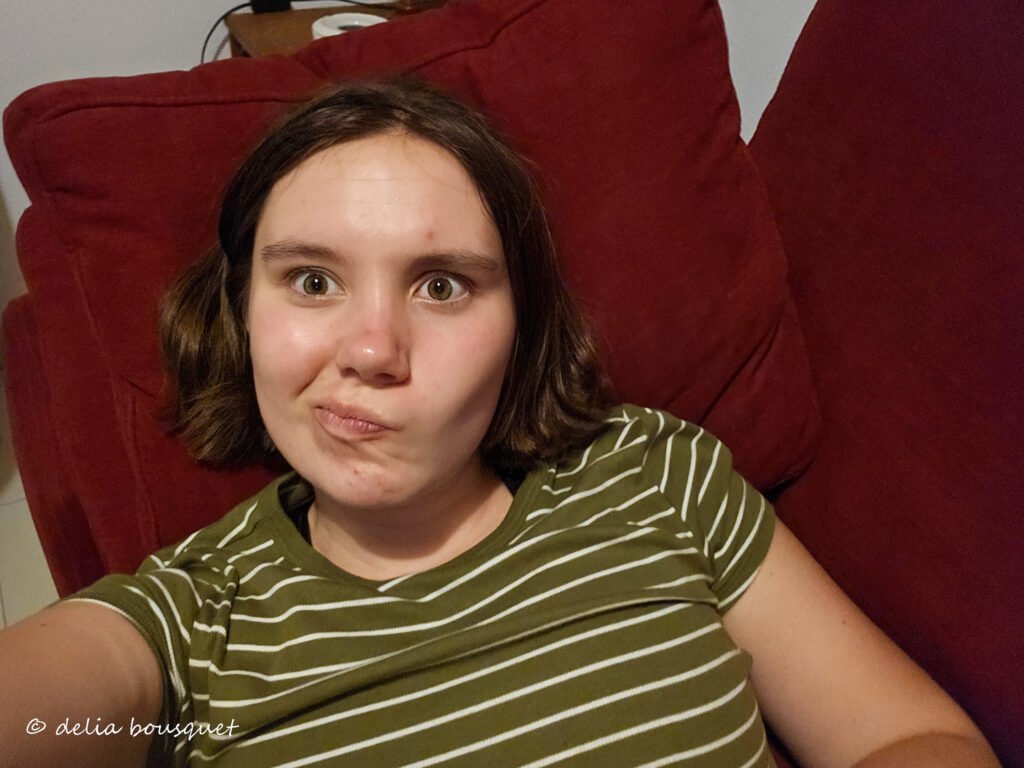
I was the only one who saw it, but it was amazing. I took a nice two-mile walk on the beach and got to see all the fishermen (fisherpeople? I’m pretty sure they were all men—side tangent: what do you call a woman who fishes?). It might have been a little cool for a swim in the U.S. (around 60°F), but the water was warm and super refreshing.
After a shower (which left the bathroom looking like the Sandman had a party in there), I packed up and went back to the now well-lit heladería—which no longer seemed sketchy, just pretty normal—for breakfast.
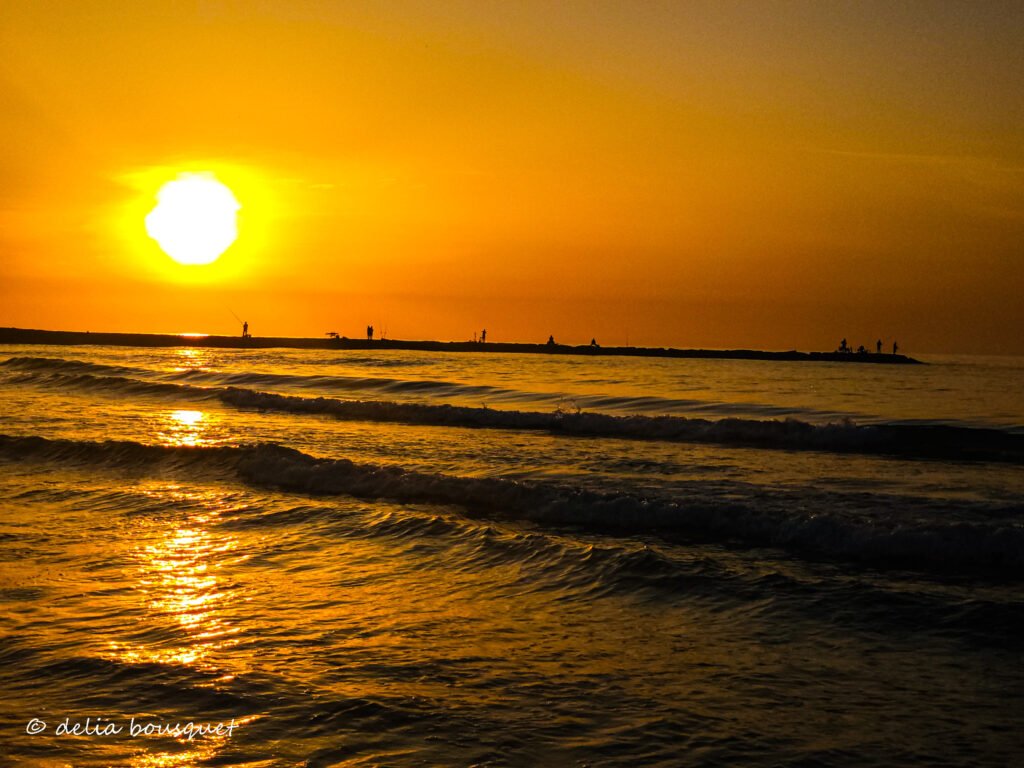
Guess how much my coffee and croissant cost? A whopping four euros. Definitely couldn’t get that even for a small coffee in the U.S.
Note: I checked out Starbucks prices in Spain and left very angry. ☹
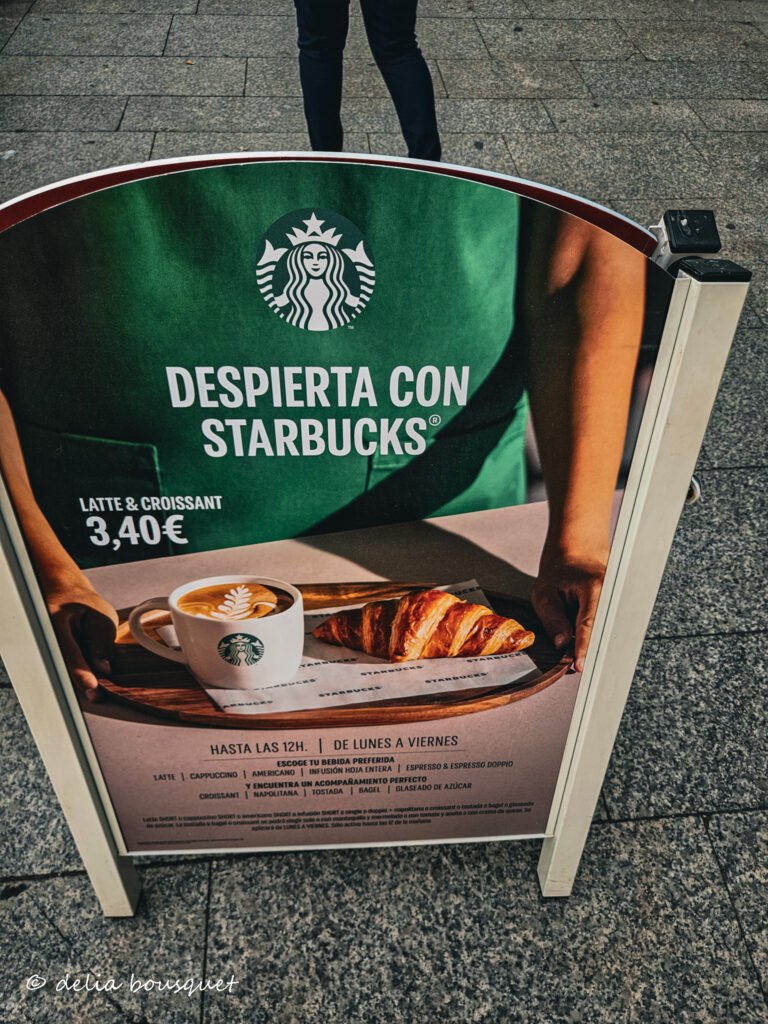
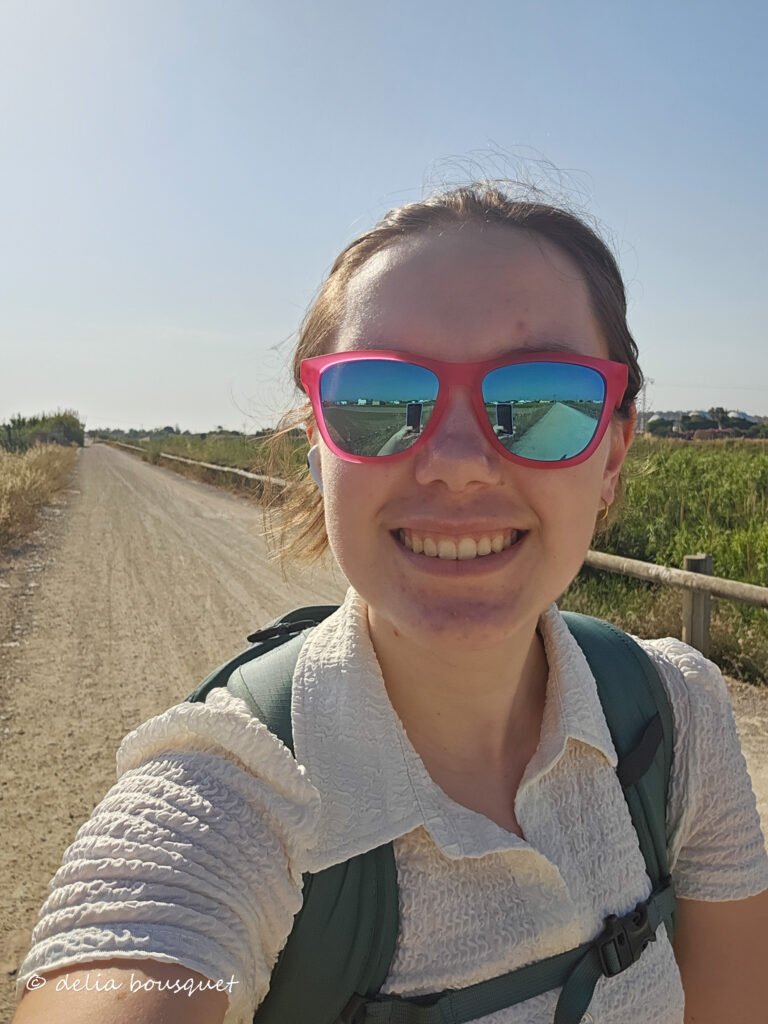
Since there was no way I was getting an Uber by myself (most of the group was still asleep), after desayuno I embarked on what would turn out to be about a 20 km walk—both to and around Valencia. I blame Google, because it said the total distance wouldn’t be that long, but overall it was a fun experience—minus the bruises on my shoulders from my heavy backpack, a blister on my foot, and just the general soreness I woke up with the next day.
Pro tip: if you decide to start a long camino in very hot weather, dress appropriately. I didn’t expect this walk, so I was wearing just some regular clothes. Definitely raised some locals’ eyebrows since part of the walk was literally on dirt trails through farms, while I looked like I was dressed to go to church or some formal-ish event. My bad.



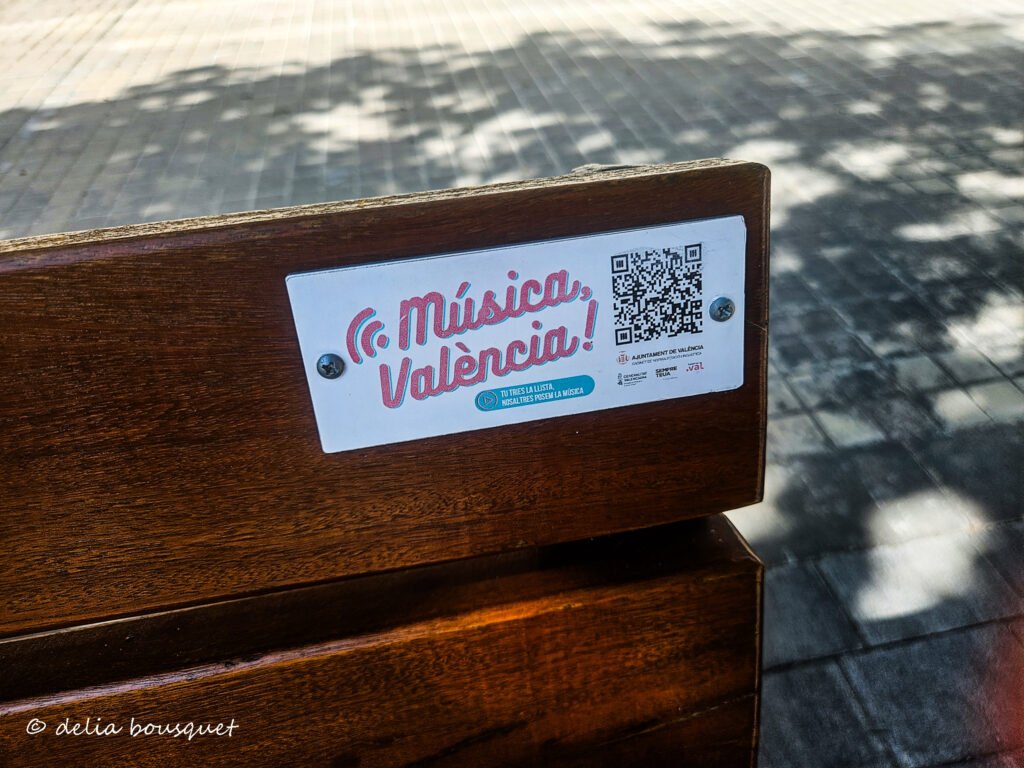


Aside from my questionable clothing choice, the walk was fun. Along the way, I got to see how the environment changed—from the beach to farms, then to the outskirts of the city where locals were heading to the pandería (bakery) to buy bread, past the university, a Mercadona (I’m now up to nine sitings), and finally into the touristy city center.
Maybe it was just because of the long walk, but Valencia felt very spread out. In Madrid or Toledo, you can easily access all kinds of shops and businesses with convenient public transport. I can’t say the same about Valencia.
Of course, I had to try paella while I was in Valencia, which was fantastic—10/10. Not sure if it was authentic paella, but to be 100% honest, after that long walk I had zero energy to be picky, and it was really good anyway.
During the walk, I stopped into Mercadona, a popular supermercado (supermarket). It was so cool to see all the food options in Spanish. It was really busy too—I must have hit the prime 11 am sábado (Saturday) rush.
I’ve always wondered why the Spanish word for shopping cart is carrito, a diminutive form of carro (car), which literally means “little car.” Well, it’s because the carritos are actually tiny—more like mini shopping carts. You’d probably need two or three carritos in Mercadona to equal the mammoth carts at Target.
Oh, and fun fact: eggs and milk aren’t refrigerated. Also, olive oil is sold by the gallon.
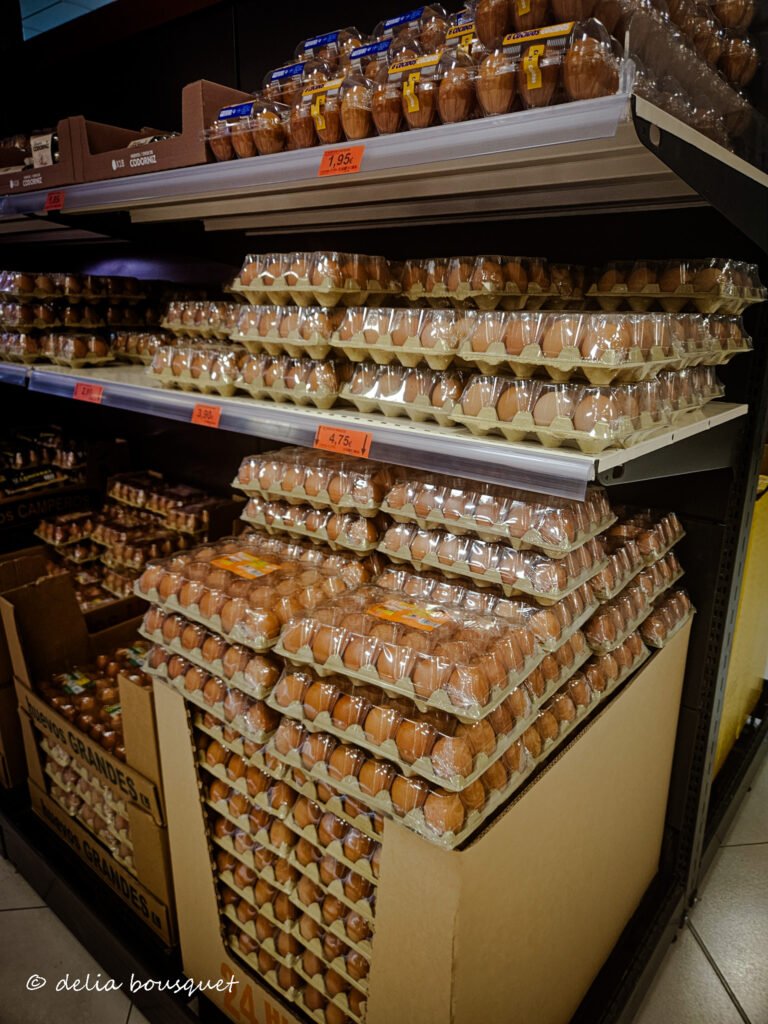
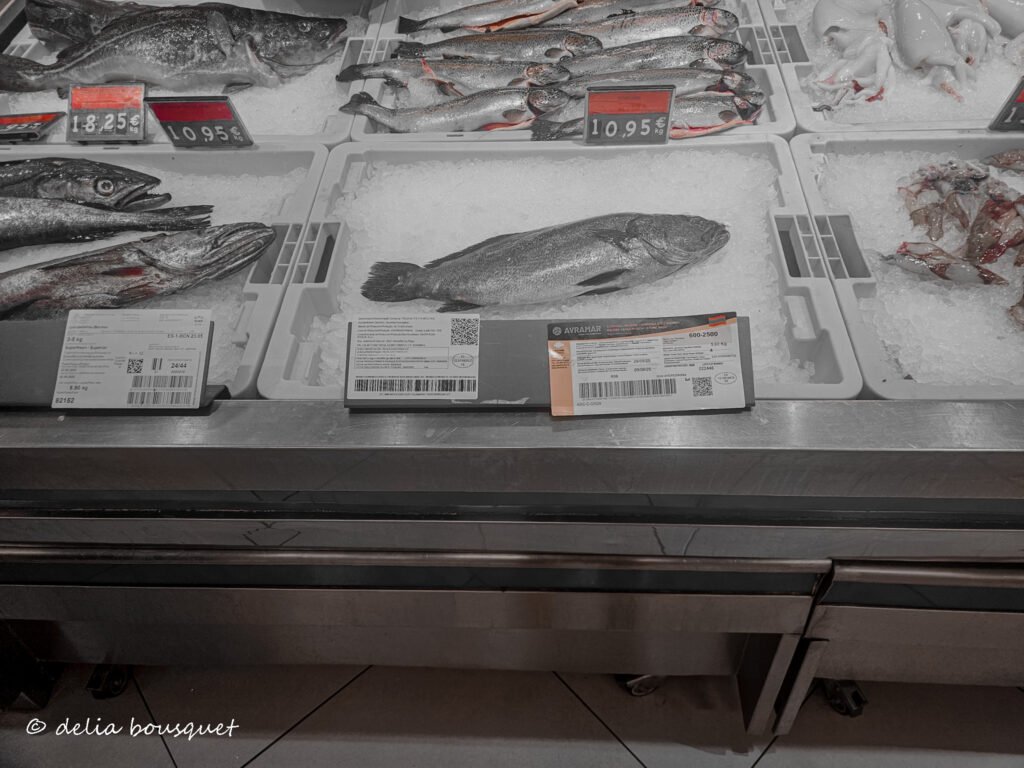

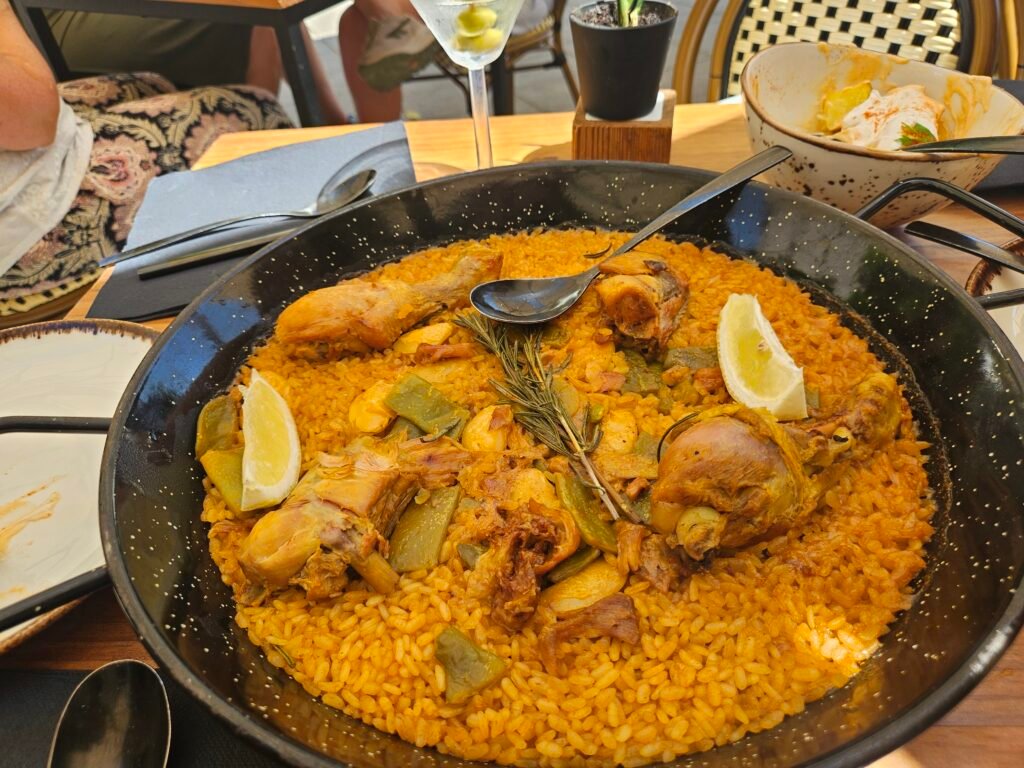
I also stumbled upon the embajada (embassy) of New England—Dunkin’. Sadly, it was closed. I was this close to having my quintessential Connecticut moment: Dunkin’ coffee in hand, beach breeze in my face. Alas, no luck this time.
Besides the paella, my other main goal was to catch some Catalan in the wild. And let me tell you—I was left very, very, very disappointed. Aside from the occasional municipal sign or the benvinguts (welcome in Catalan) at Mercadona, the real language battle in Valencia was all English. Sure, this was mostly in touristy spots, but even in residential areas far from the city center, Catalan was basically nonexistent. I definitely saw way more Catalan in Barcelona last year—in businesses and signage alike. Fingers crossed I’ll see more in about 1.5 weeks in Catalunya.
At 3 pm, I hopped on the train for the voyage back to Toledo, arriving safe and sound.
Para concluir (to conclude): if you’re only in Valencia for a few hours, you’ll be fine—the touristy stuff is all concentrated in one spot, and the beach is just a 20-minute drive away. However, I definitely don’t recommend the very long walk.


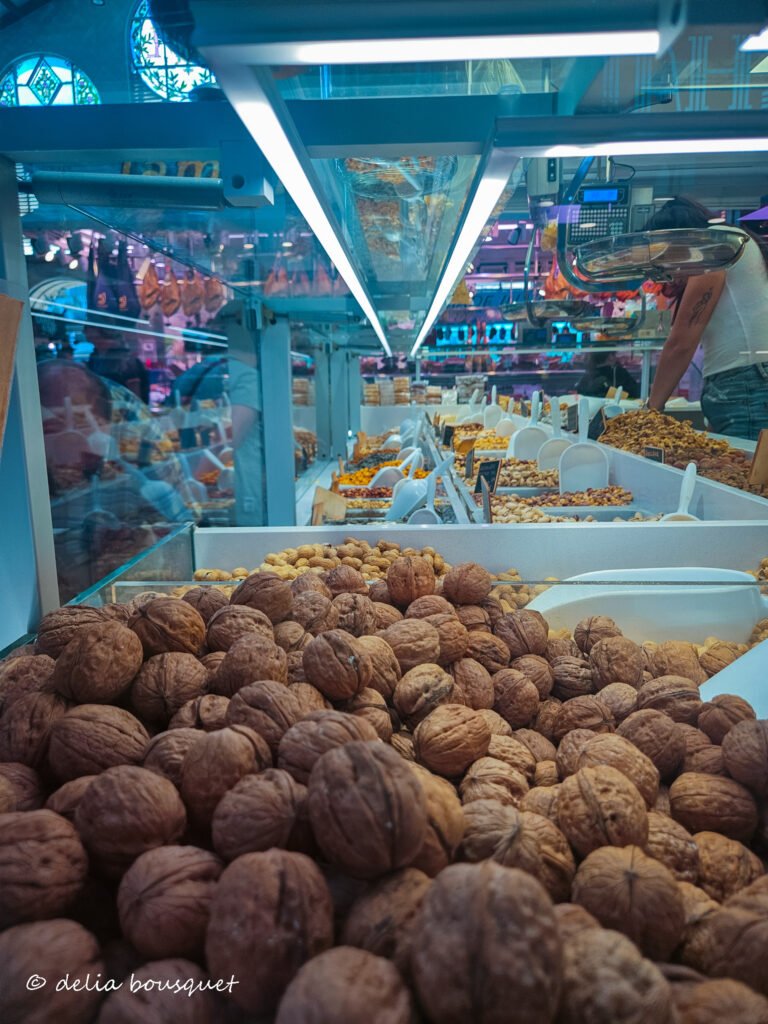
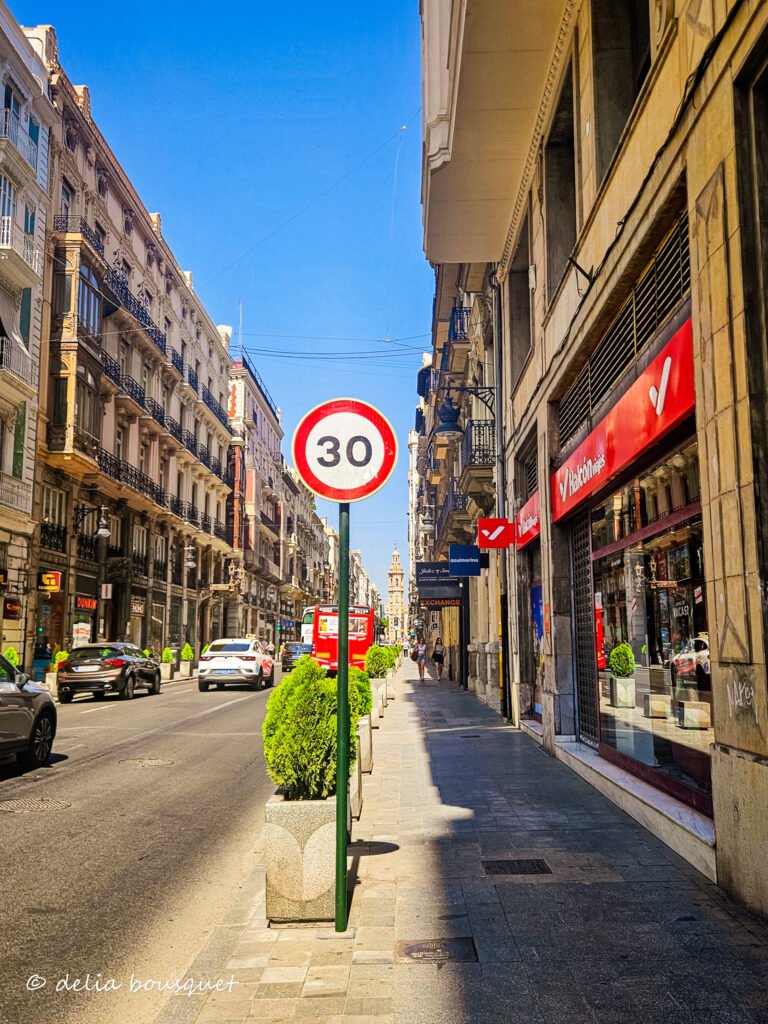

Sunday mostly consisted of recovering from this eventful trip. I had the most amazing breakfast of my life: tostada (toast) with aguacate (guac) and jamón (ham). Sooooo good. If I had to pick one food to eat every day for breakfast for the rest of my life, this would be it.
The rest of the day was spent working on an essay and presentation for class (I’ll spare you the details).
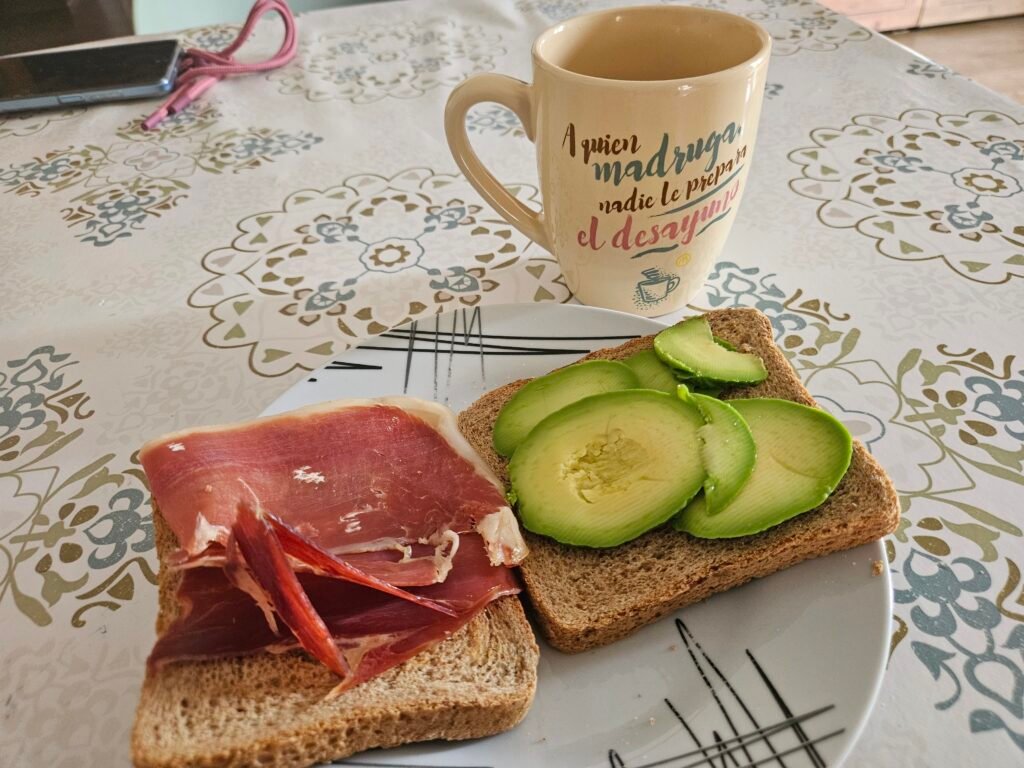

Monday, of course, I had class. In between, I wandered to the biblioteca (library) to explore and do some reading. I found a fun women’s rights section, sustainable development goal cubes, books on English, and more. I spent a few hours reading before heading back to the casa for an exciting lunch with the niños (they’re back, finally!). Then it was off to my second class of the day.
After class, I worked more on the presentación about my project in Madrid. Around 7:30 pm, on my way back to the casa, I ran into my host family headed to the library. I decided to tag along. They stopped at the market to buy some stuff, and we got helado (ice cream) to enjoy on our slightly uphill, hottish walk to the library (see photos from last week).
What made the trip super special was that the niña in my casa was searching for some books to read. We went to the kids/young adult section looking for libros (books) de terror y miedo (terror and fear). Luckily, these books were well within my reading level, so I was able to help with the search. Hint: look for the black books with bats or skeletons on the covers.
The highlight of the adventure was when I proposed my three chosen books (might I add, after her mom failed many times at book proposals) and the girl was literally jumping up and down with excitement. I don’t remember the titles exactly, but two were Roald Dahl and one was something like The Assassin and the Kiss or something spooky like that.
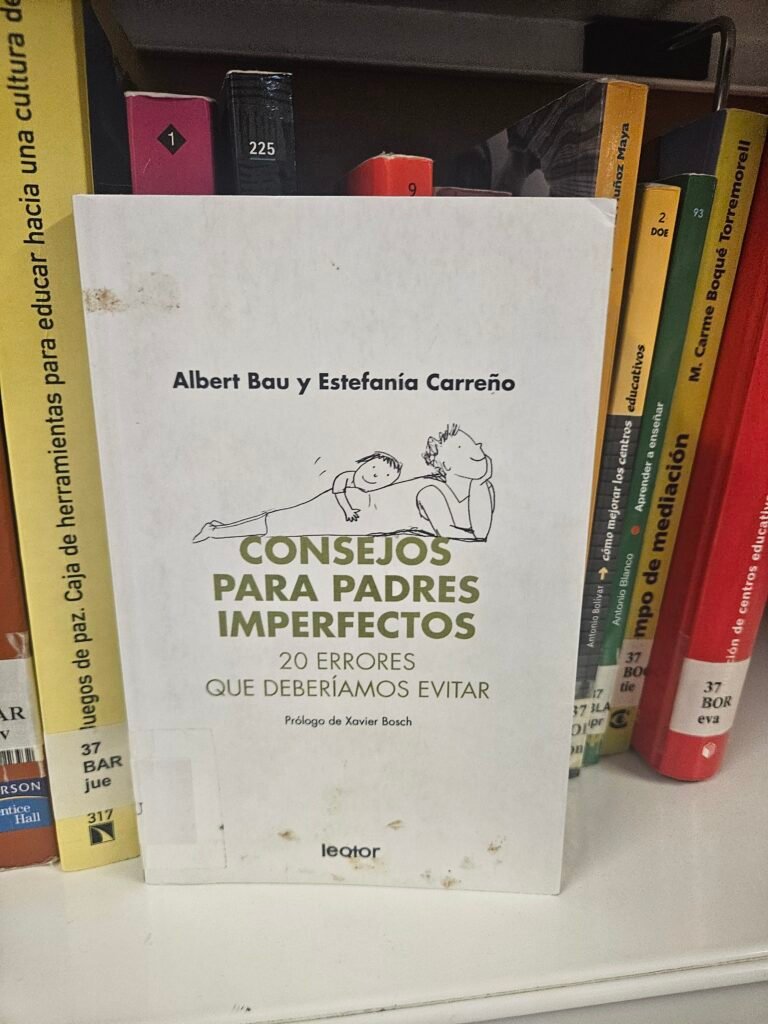
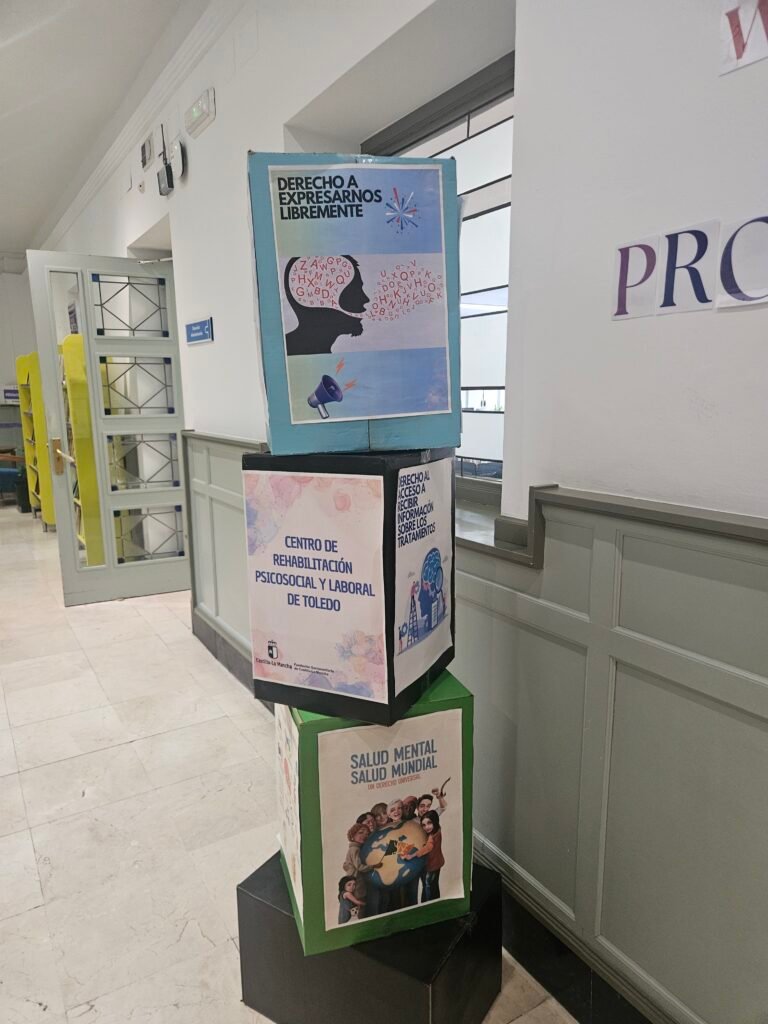
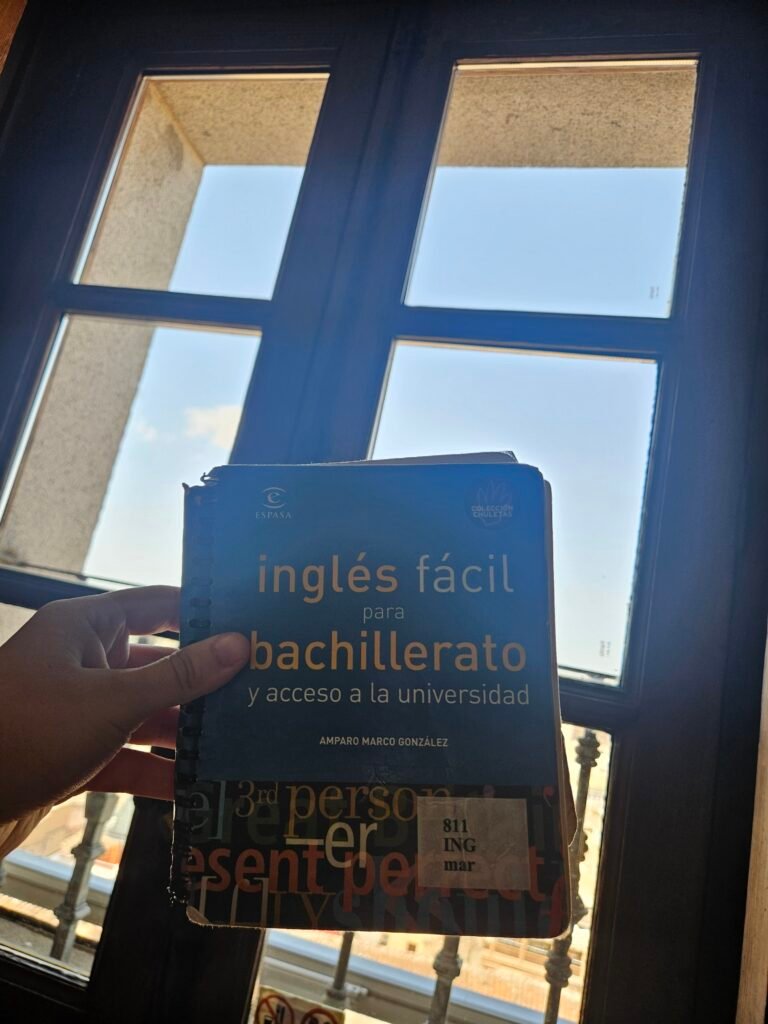
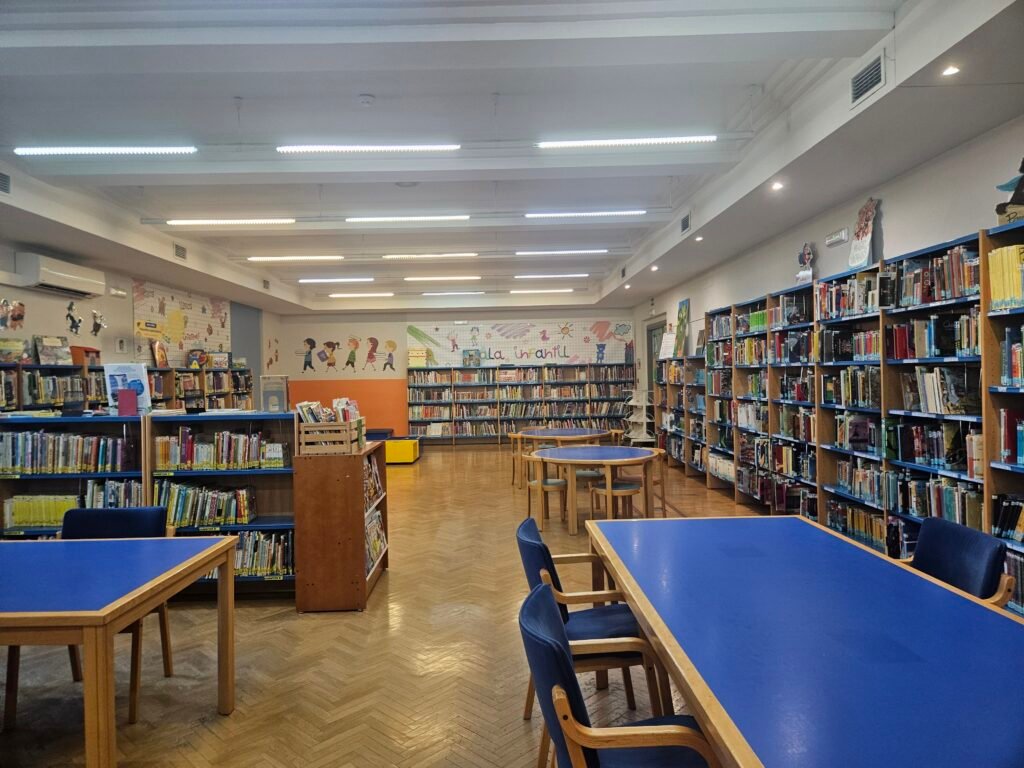
This experience rivaled my photographer adventures in Valencia, when multiple people walked up to me and started giving me all kinds of directions on how to take their photo. I kid you not—they wanted a full photo shoot in the calle (street). But I was happy to do it, just because they asked in Spanish. I don’t know what it is about me that says “photographer” or “person to ask for directions,” but no matter where in the world—whether it’s the woods of CT, the ivy-covered Princeton campus, or even a foreign country—people just love to stop and ask me for directions or photos. I guess that’s a good sign, right? Except for that one woman who wanted to find a specific building in Princeton from a movie I had never seen.
And that finally brings us to today, Tuesday—essay and presentation day! Both went well, though there was a bit of a batalla (battle) with the impresora (printer). Luckily, we were told that because of the batalla, we wouldn’t be charged for any extra paper or ink. Silver lining, right?
After that, we went to a museo (museum) in town—though the name is totally escaping me right now. The rest of my day has been dedicated to writing, more writing, and organizing/editing photos. The glamorous life of a student abroad.
Looking ahead, the week promises a Puy du Fou adventure. What exactly Puy du Fou is? I can’t tell you—I’m just as curious! But good news: no class tomorrow, so estoy emocionada (I’m excited). We also have another trip on Friday to yet another museo (are you sensing a trend yet? 😊).
Weekend plans? A long day trip to Santiago de Compostela, the famous pilgrimage destination across Spain and Europe. Don’t worry—I’ll be riding the speedy AVE train, not walking the pilgrimage trail. Clearly, I have learned my lesson from last weekend’s 20 km walk.
And, as with last week, here are some palabras de la semana (words of the week):
- Mojado (wet): Very relevant for sandy bathing suits thrown in garbage bags from Valencia, and floors with Miau’s blood on them.
- Fregona: What was used to clean said blood off the floor.
- El profesor de apoyo: Simple Spanish-to-English translation, but I was completely blank on the English-to-Spanish when explaining the US university system with all our TAs.
- Pesado (heavy): My backpack around Valencia was definitely this.
- La tijera (scissors): For when you’re handed an ice pop and need to open it.
- El psicólogo (psychologist): Relevant when la niña in my casa talks about her friend—or maybe acquaintance is a better word—who is a little loco.
- Los truenos (thunder)
- Agotada (exhausted): Me, after many nights of poor sleep.
- Pegatinas (stickers): Very relevant in the calles (streets) of Chueca, Madrid, for our linguistic project.
That’s it for this week!
Que tengáis un buen día y nos vemos el próximo,

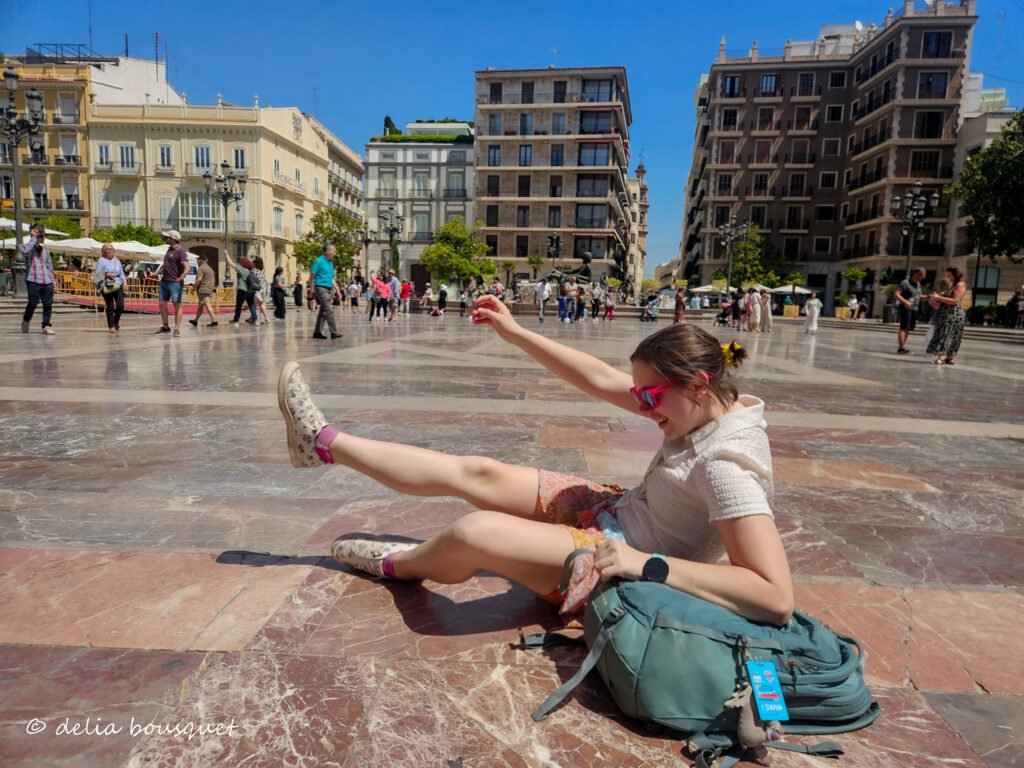

Has host family taken you swimming yet? Sounds like it would be something to do in hot weather.
Also loved that opening picture!!